Transforming your backyard with thoughtful hot tub landscaping creates an inviting retreat that enhances both relaxation and property value. Recent trends show homeowners increasingly integrating hot tubs seamlessly into their outdoor spaces through strategic plant placement, architectural elements, and ambient lighting. Whether you're working with a modest budget or planning an extensive renovation, the right landscaping approach can turn your spa area into a private sanctuary. From natural privacy screens to sophisticated lighting systems, effective hot tub landscaping balances functionality with aesthetic appeal. These twenty landscaping ideas will help you create the perfect outdoor escape that complements your lifestyle and enhances your daily relaxation routine.
1. Hot Tub Privacy Hedge Design
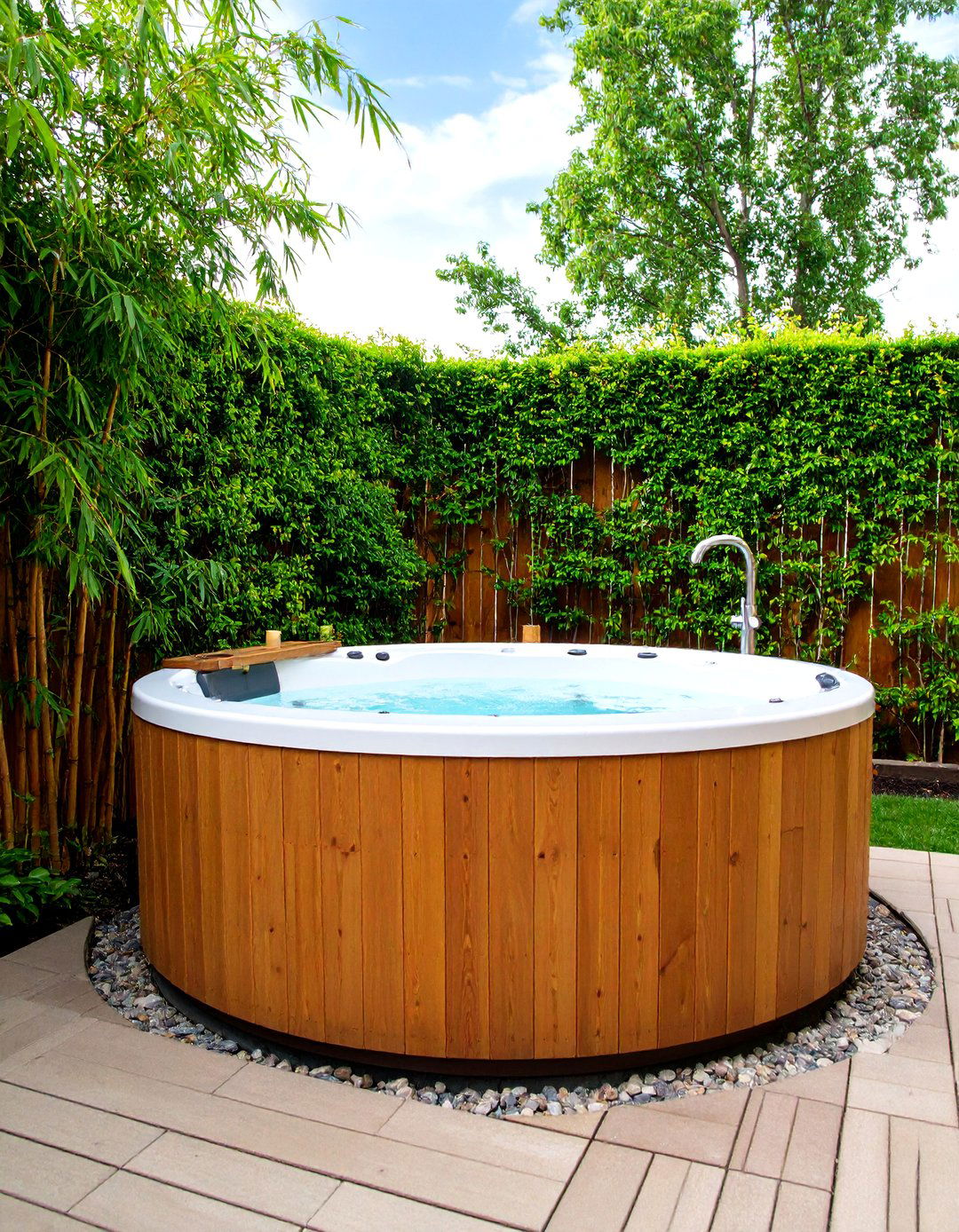
Evergreen plants like bamboo, boxwood, and cherry laurel create natural privacy screens that protect your hot tub from view while maintaining year-round coverage. Strategic placement of these plants around your spa's perimeter establishes an intimate setting without requiring expensive fencing installations. Consider fast-growing varieties such as privet or forsythia for quicker results, though they'll need more frequent pruning. Popular choices include yew for shade tolerance, cypress for vertical growth, and juniper for low maintenance requirements. The key lies in selecting plants suited to your climate zone and positioning them to create layered screening effects. Complement taller hedges with shorter shrubs to achieve a natural, graduated look that seamlessly integrates your hot tub into the existing landscape design.
2. Hot Tub Bamboo Screen Landscaping
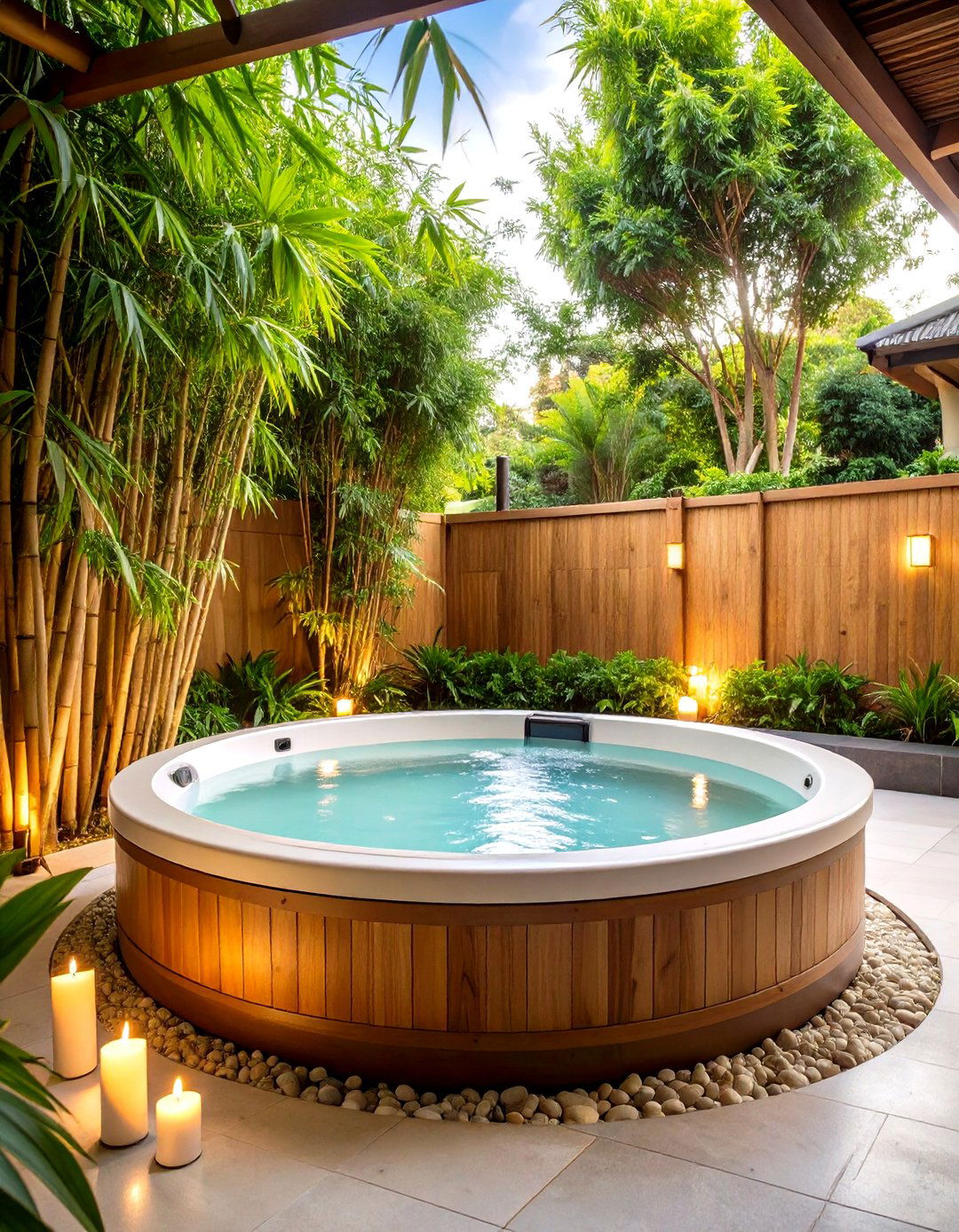
Bamboo screens offer an eco-friendly, affordable privacy solution that's easy to install and comes in various patterns and colors to create natural settings. This versatile material provides instant privacy while adding tropical appeal to your hot tub area. For permanent installations, consider planting bamboo directly in the ground with root barriers to prevent spreading. Rolled bamboo fencing delivers immediate results at budget-friendly prices, while living bamboo creates effective windbreaks alongside privacy benefits. The natural texture and movement of bamboo leaves create soothing sounds that enhance your relaxation experience. Whether you choose pre-made panels or cultivate living bamboo, this landscaping approach brings organic beauty and functional privacy to your outdoor spa environment.
3. Hot Tub Deck Integration Design
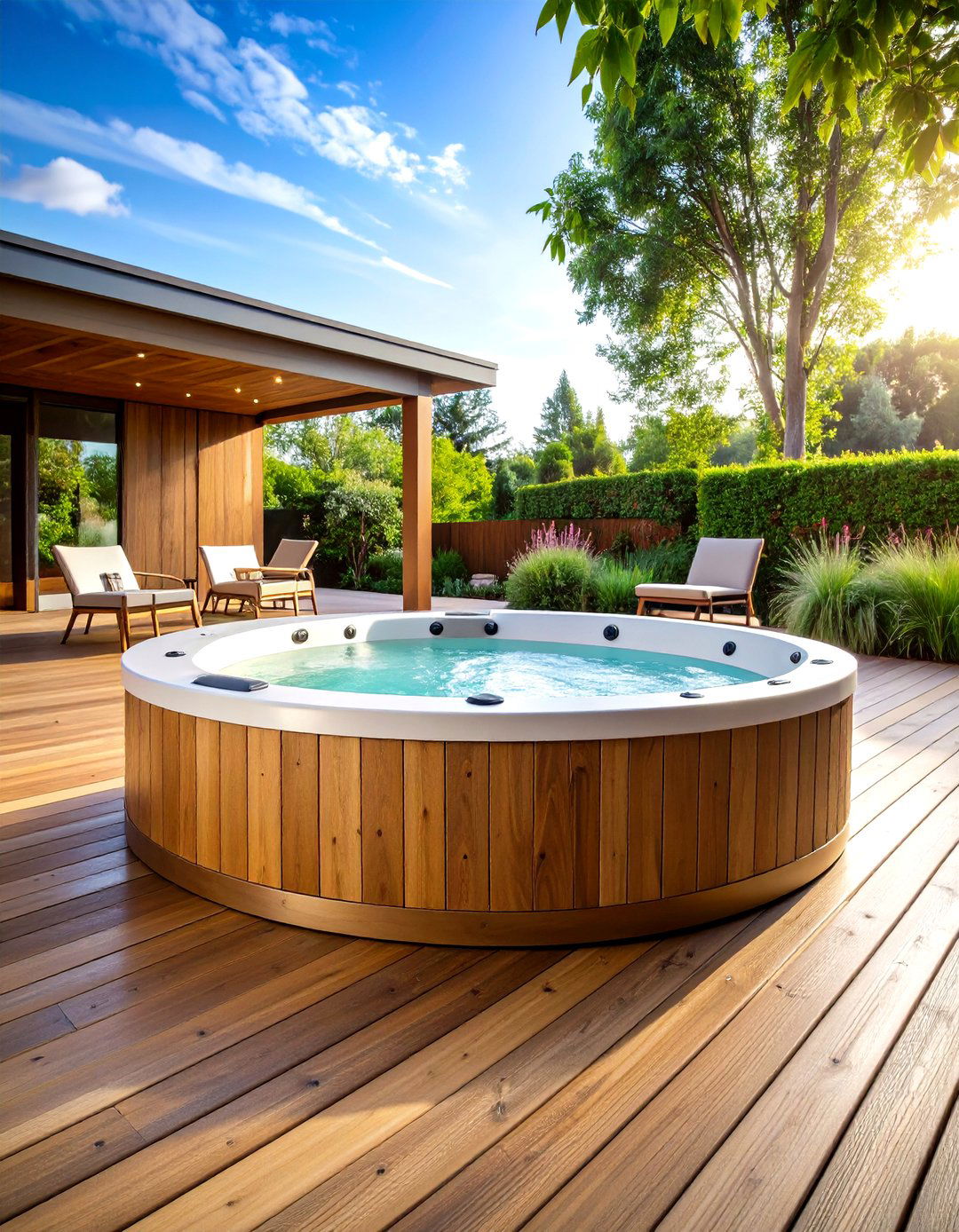
Sinking your hot tub into deck surfaces creates a minimalist approach that offers clear backyard views while making the spa more accessible for users with mobility concerns. This design technique eliminates visual barriers and creates seamless transitions between your hot tub and surrounding entertainment areas. Built-in seating around the perimeter maximizes functionality while providing convenient spots for towels and beverages. Professional installers recommend leaving sixteen to eighteen inches of rise above deck level to accommodate spa covers when not in use. The integrated approach requires careful structural planning to support the weight of a filled hot tub, but the resulting clean lines and sophisticated appearance justify the additional engineering requirements for most homeowners.
4. Hot Tub Stone Wall Landscaping

Although natural stone installations require higher initial investment, they create dramatic focal points that significantly increase property values over time. Stone walls serve as powerful statement pieces that come in various natural colors, allowing you to match your existing aesthetic preferences. Consider incorporating water features into stone walls for added ambiance and sound masking. The durability of stone materials ensures your landscaping investment will withstand weather extremes while requiring minimal ongoing maintenance. Brown and beige stones create classic European elegance, while dark grey options provide modern sophistication. Board-formed concrete planters combined with stone elements can house conifers, maples, and moss for Pacific Northwest-appropriate plant selections. Strategic lighting behind stone walls creates stunning nighttime effects that transform your hot tub area into an architectural showcase.
5. Hot Tub Pergola Garden Design

Combining pergolas with your hot tub landscaping provides both structural elegance and practical weather protection for year-round enjoyment. Well-placed pergolas or shade panels add architectural design layers while keeping users at desired temperatures during sunny conditions. String market lighting across pergola beams to create enchanting evening ambiance that extends your spa usage hours. The structure offers excellent support for climbing plants like jasmine or ivy, creating living walls that enhance privacy naturally. Modern pergola designs often incorporate retractable canopies that adjust to weather conditions and seasonal preferences. Consider adding curtains or roller shades for additional privacy control and weather protection during unexpected storms or high winds.
6. Hot Tub Lighting Landscape Setup
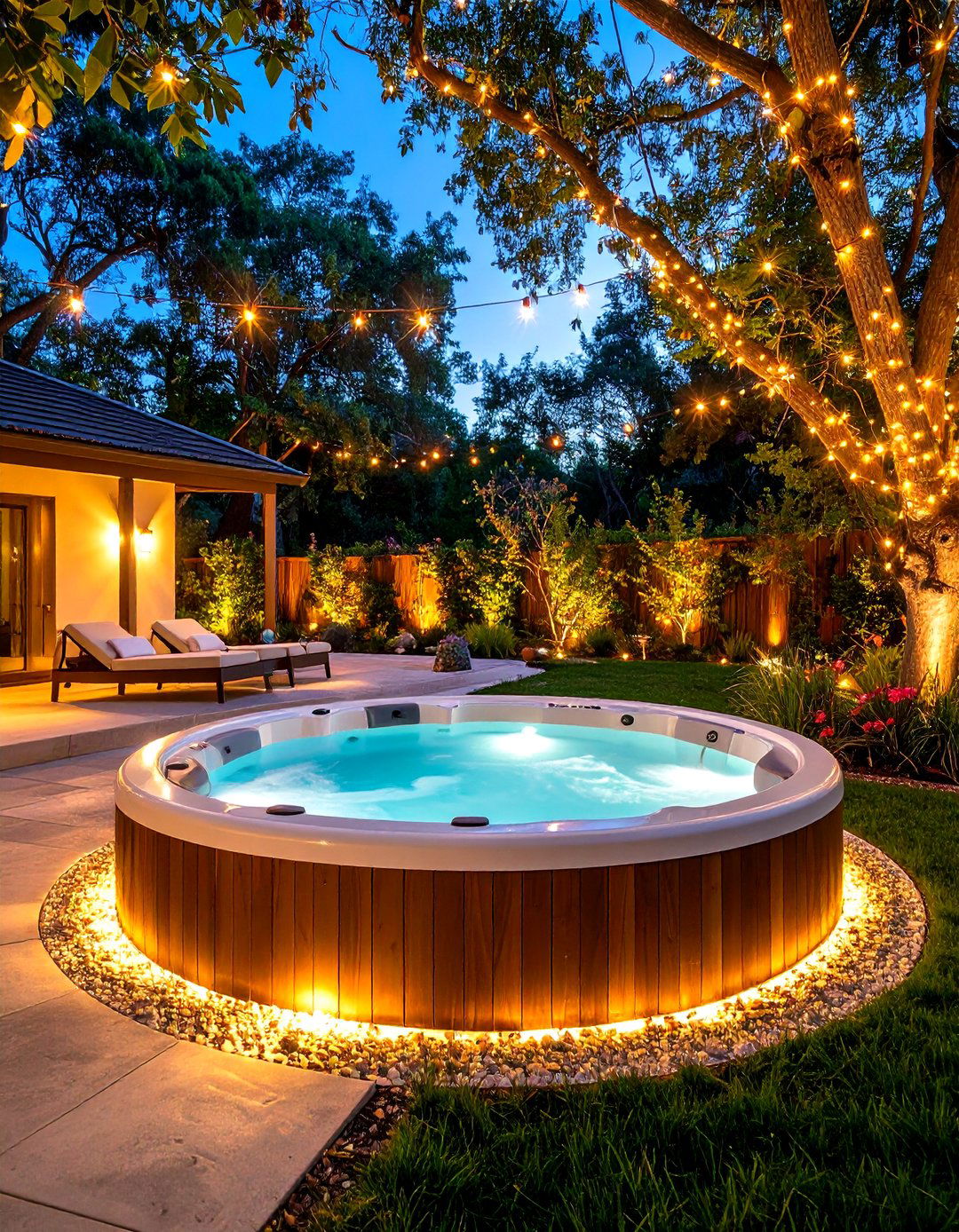
Strategic lighting transforms your hot tub area from a daytime feature into an enchanting nighttime retreat that extends usage throughout evening hours. Fairy lights provide affordable enchantment when strung around nearby trees or planters, creating twinkling forest-like effects. Pathway lighting improves safety while casting soft glows throughout your yard using energy-efficient LED options in various styles and colors. Up-lighting at tree bases and down-lighting from branches creates dramatic shadows without harsh glares that might disrupt relaxation. Recessed ground lighting around your hot tub's perimeter adds subtle illumination while remaining invisible during daylight hours. Combine multiple lighting techniques to create layered ambiance that adapts to different moods and occasions while maintaining the serene atmosphere essential for relaxation.
7. Hot Tub Water Feature Landscaping
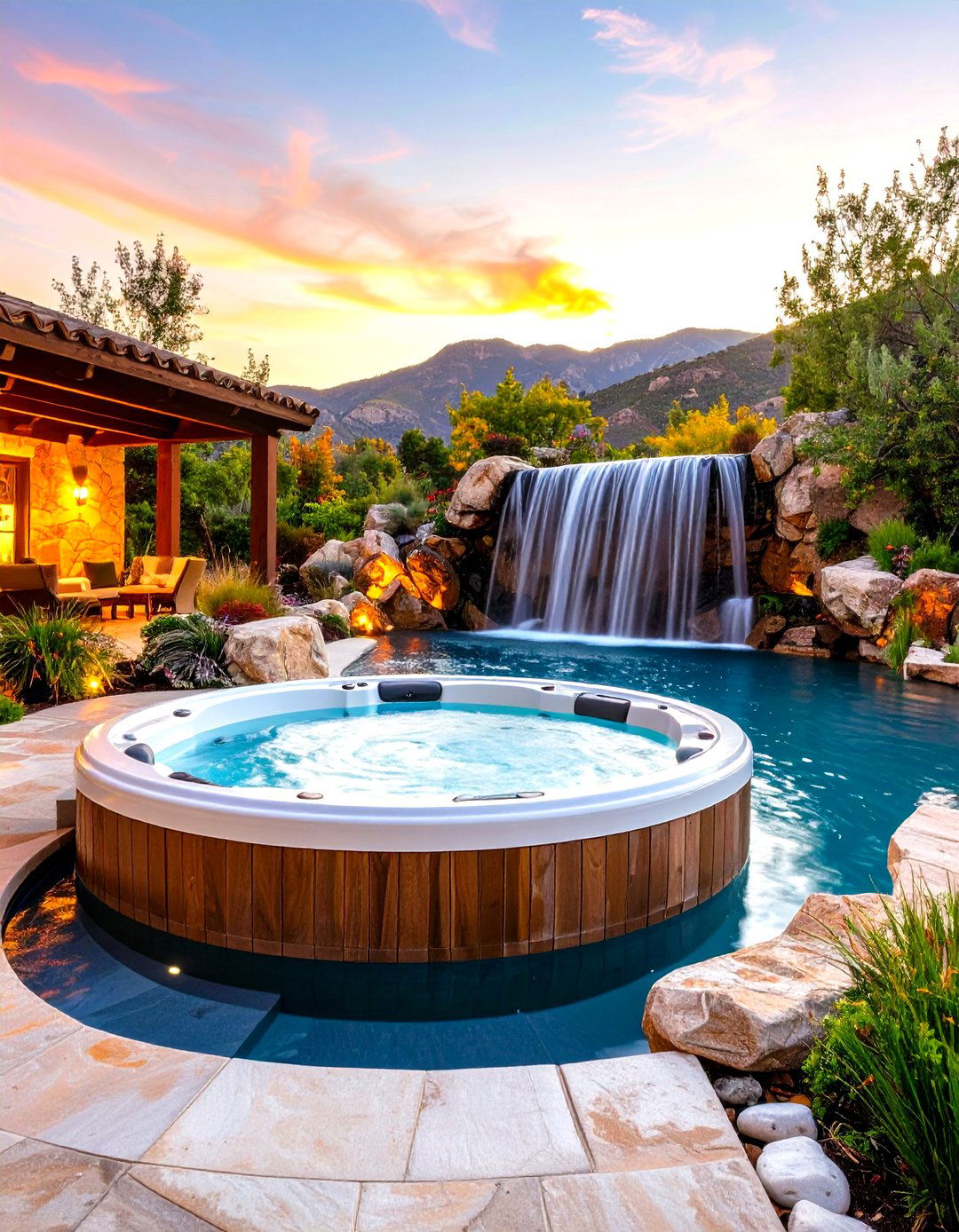
Incorporating water features near your hot tub creates soothing soundscapes that mask neighborhood noise while enhancing the overall sensory experience. Waterfall walls provide steady streams that cascade into reservoirs, creating glass-like water walls that look amazing while providing ambient sound. Small fountains or babbling brooks can be integrated into surrounding landscaping to create cohesive water themes throughout your outdoor space. The sound of moving water promotes deeper relaxation by providing natural white noise that drowns out traffic and other urban disturbances. Consider solar-powered options for environmentally conscious installations that require minimal electrical work. Position water features strategically to create visual interest from multiple viewing angles while ensuring easy maintenance access for cleaning and seasonal adjustments.
8. Hot Tub Tropical Garden Design
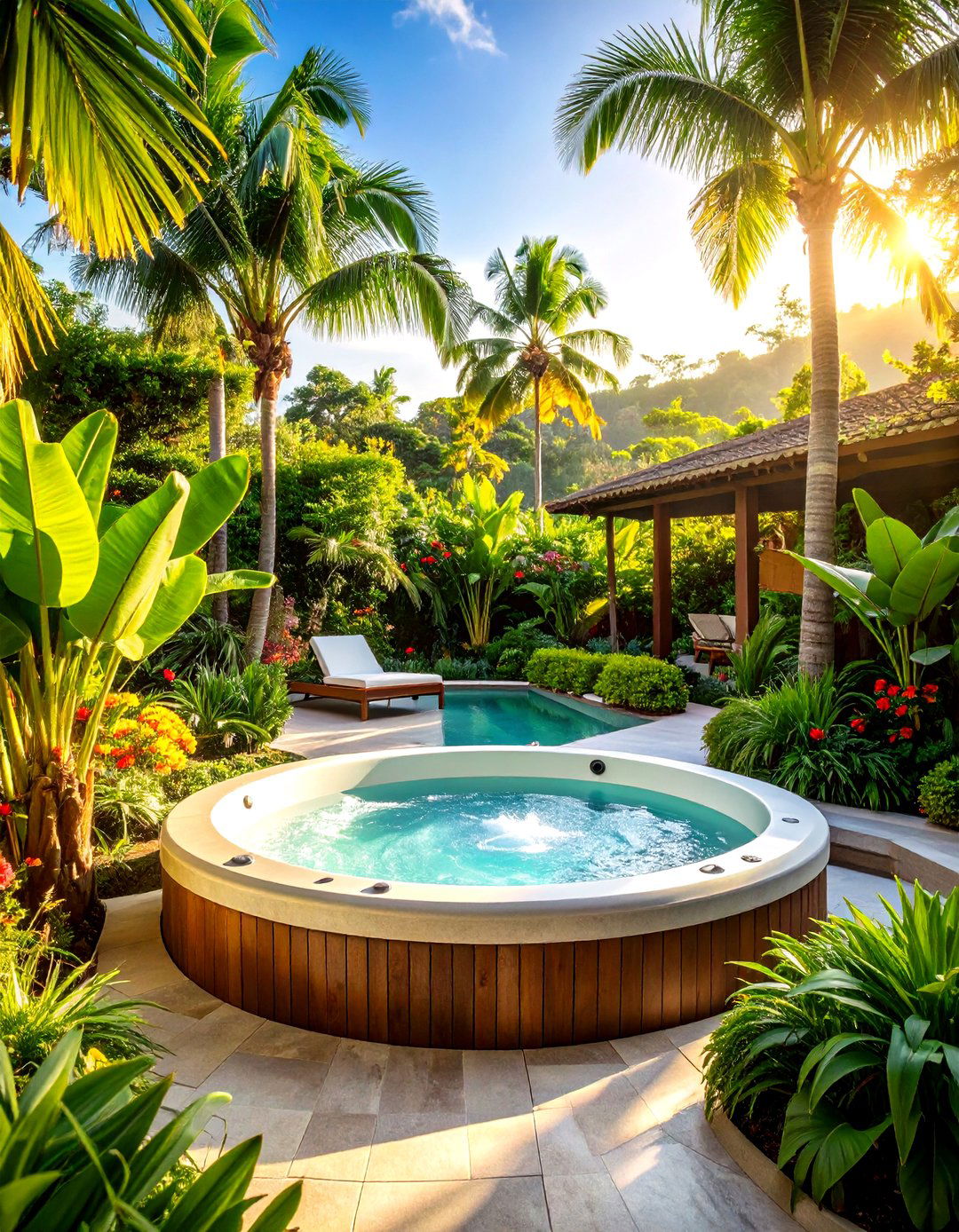
Creating tropical themes around your hot tub brings vacation-like atmosphere to your daily routine using architectural foliage and vibrant flowering plants. Surround your tub with architectural foliage and bright blooms, then add exotic colors and patterns for chill-out zones that look as great as they feel. Research plants that thrive around hot tubs and in your specific region, considering whether your spa location receives full sun or significant shade. Palm trees, cannas, banana plants, and elephant ears create interesting shaped leaves that establish tropical aesthetics in warm climates. For cooler regions, substitute with cold-hardy alternatives like fatsia japonica or umbrella plants that provide similar visual impact. Add colorful ceramic pots and bamboo accents to complete the tropical transformation.
9. Hot Tub Zen Garden Landscaping
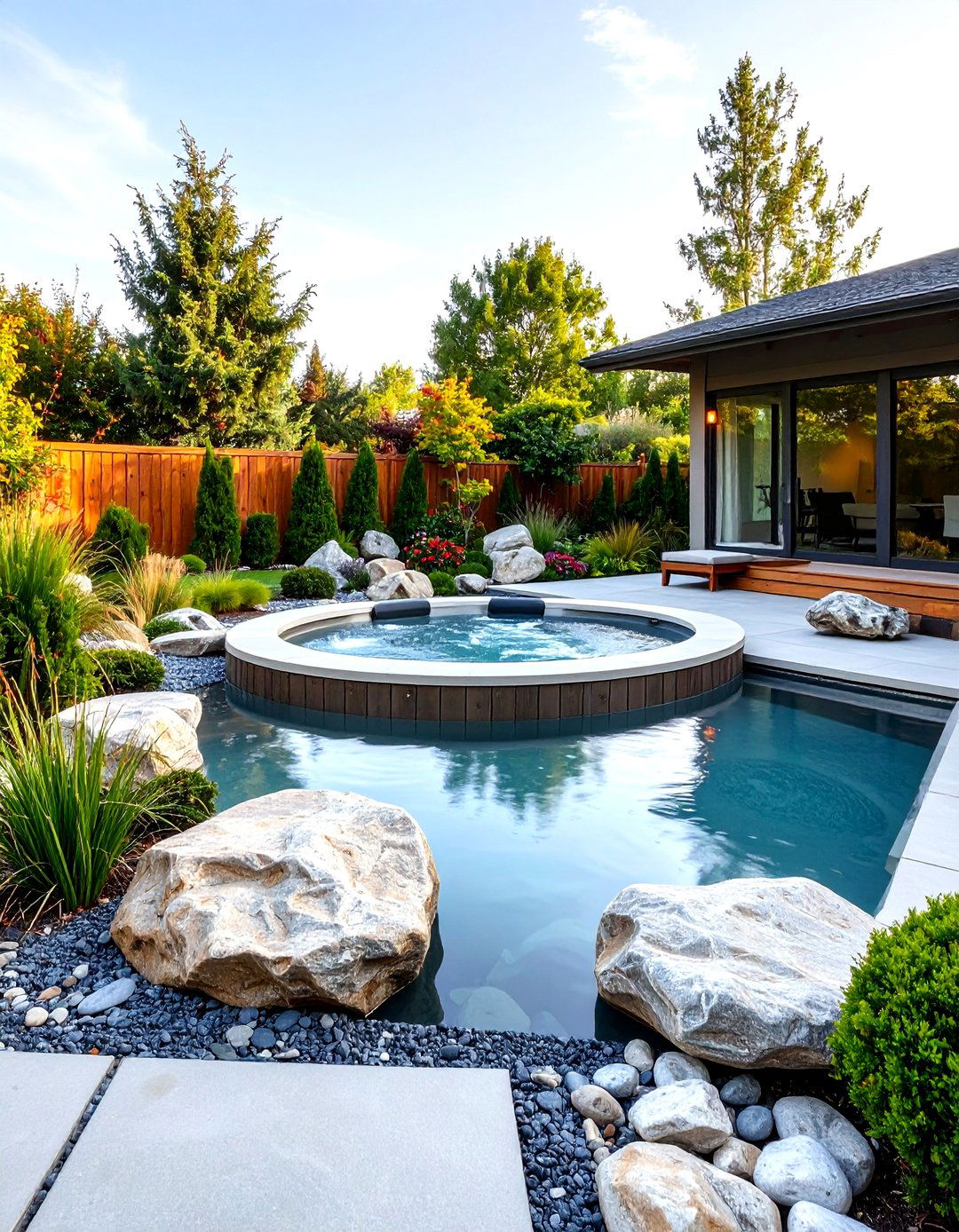
Design principles inspired by Japanese gardens create serene meditation spaces that enhance the therapeutic benefits of hot tub soaking. Taking inspiration from Japanese precedents, incorporate paving schemes with planters, cedar elements, and carefully positioned focal trees like maples. Remove clutter and garden tools that could interrupt your zen, surrounding the area with lush plants to create calming jungle vibes. Integrate smooth river rocks, carefully raked gravel areas, and minimalist plant selections that emphasize form and texture over bright colors. Water features should provide gentle, consistent sounds rather than dramatic cascades. Choose neutral color palettes for hardscaping materials and focus on creating balance through asymmetrical arrangements that feel natural yet intentional.
10. Hot Tub Container Garden Design

Container gardening around your hot tub offers flexible landscaping solutions that adapt to seasonal changes and evolving design preferences. Container gardens provide privacy at any desired height while offering advantages of portability and customizable arrangements. Large planters can accommodate substantial shrubs for immediate privacy impact, while smaller containers allow for colorful annual displays that change with seasons. This approach proves especially valuable for renters or homeowners planning future relocations. Series of containers with shrubs and plants can be filled with vibrant annuals that enhance landscaping while creating secluded outdoor sanctuary feelings. Choose weather-resistant containers that complement your hot tub's style and consider wheeled bases for easy rearrangement during entertaining or maintenance activities.
11. Hot Tub Raised Platform Landscaping
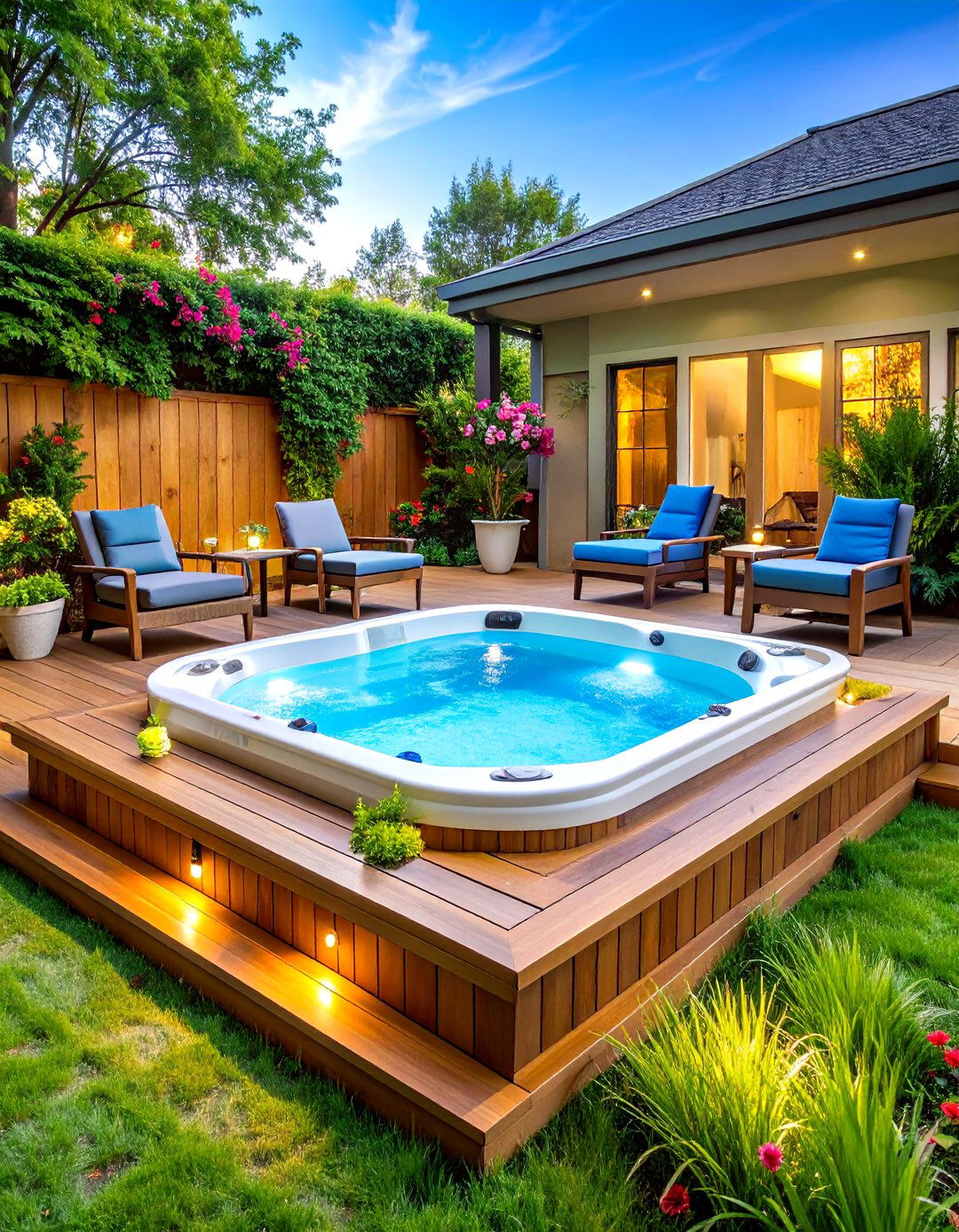
Elevating your hot tub on raised platforms creates impressive visual impact while improving drainage and accessibility for equipment maintenance. Two-step elevated designs provide modern aesthetics while offering convenient spots to place towels or beverages during soaking sessions. The elevated position naturally improves privacy by raising sight lines above typical fence heights and surrounding landscape features. Raised deck installations may require guardrails that improve privacy while meeting safety codes, with options for decorative infills that enhance aesthetics. Incorporate built-in storage within platform structures for hot tub accessories and maintenance supplies. The space beneath raised platforms can accommodate equipment housing, pool pumps, and filtration systems while maintaining clean sight lines throughout your landscape design.
12. Hot Tub Sunken Design Integration
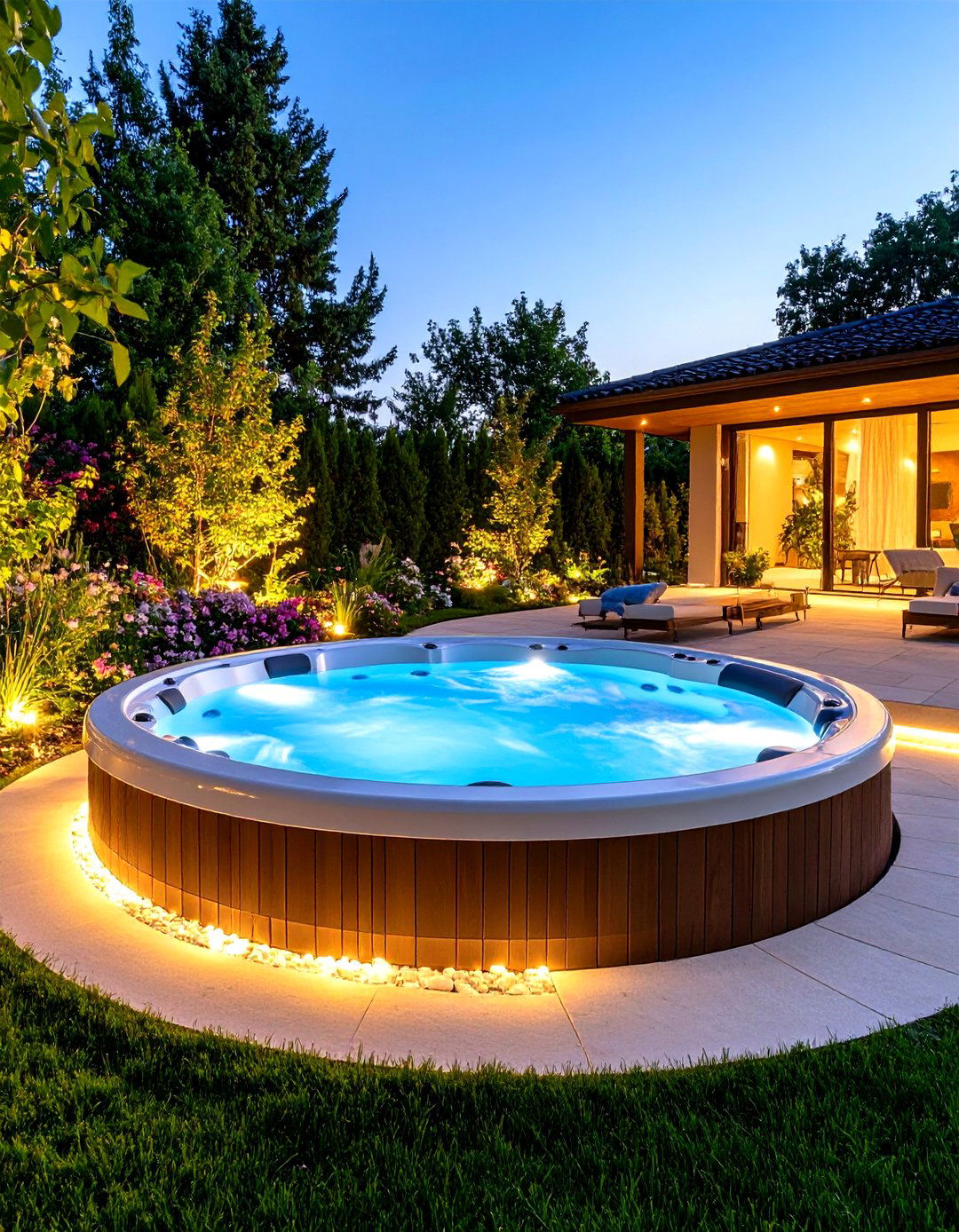
Although sunken installations require more complex engineering, they create sophisticated appearances that seamlessly integrate hot tubs into existing landscape grades. Sunken deck positioning places the structure slightly below hot tub rims, but requires solid foundations to prevent shifting that could ruin seamless appearances. This approach provides 360-degree viewing capabilities while making your spa appear as a custom-designed landscape element rather than an added feature. Flush installations offer clear backyard views and improved accessibility, though they may cost more than standalone options and prove difficult to relocate. Surround sunken installations with complementary hardscaping materials and integrated lighting for dramatic nighttime effects. Consider automated covers to maintain clean appearances when the spa isn't in use.
13. Hot Tub Trellis Privacy Landscaping
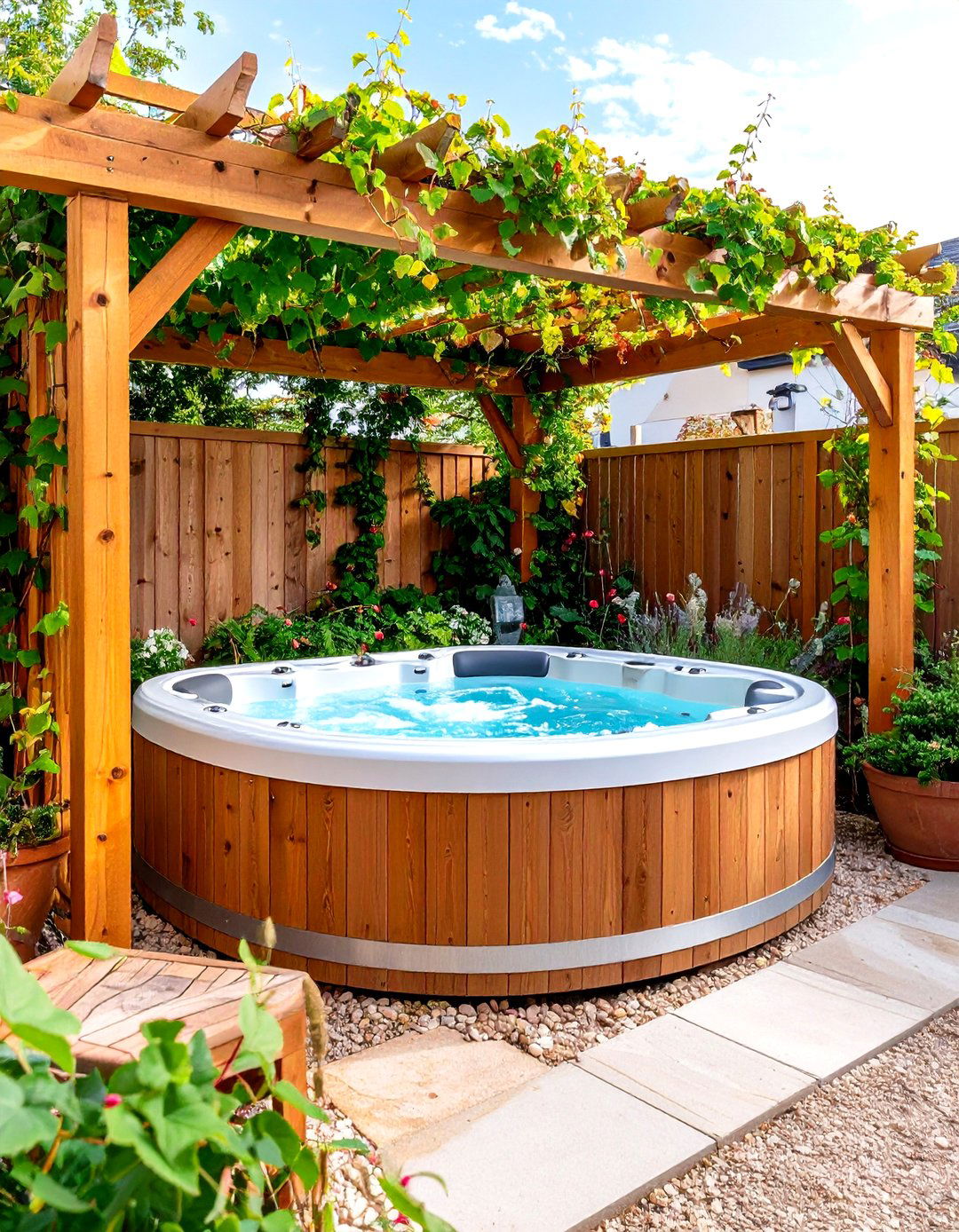
Trellis installations provide budget-friendly privacy solutions that support climbing plants while adding vertical architectural interest to your landscape design. Different trellis styles come in various colors and sizes, allowing selection of designs that perfectly complement outdoor living spaces. Trellises reinforced with climbing plants like ivy or jasmine create aesthetically pleasing noise reduction from nearby traffic or neighbors. Install multiple trellis panels to create room-like enclosures around your hot tub without the permanence of solid fencing. Virginia creeper planted in larger planter boxes with trellis support creates living walls with seasonal color changes. Choose trellis opening sizes appropriate for your desired privacy levels, and position them to block specific sight lines while maintaining airflow and natural lighting.
14. Hot Tub Fire Feature Garden Design
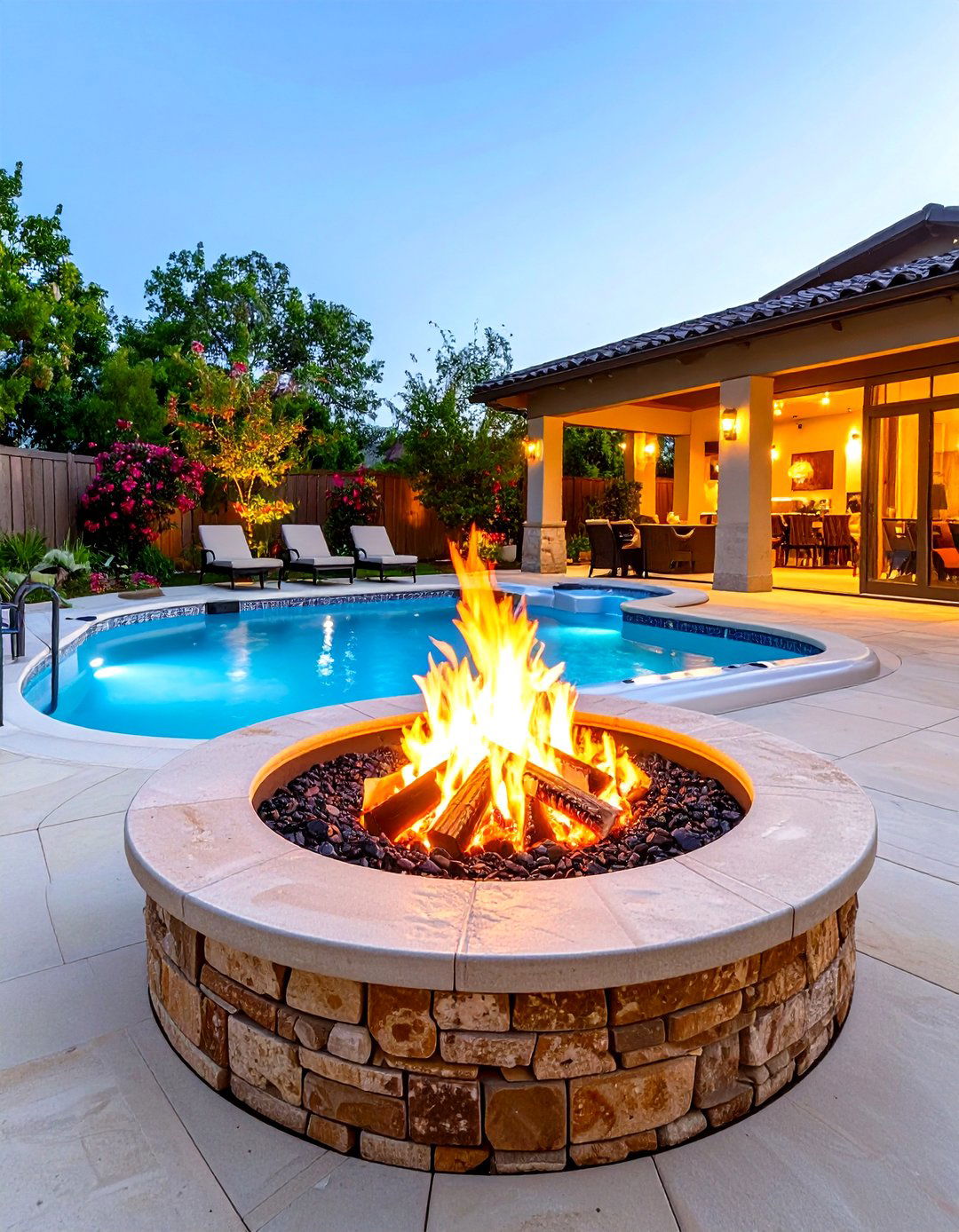
Adding fire elements near your hot tub creates dramatic ambiance while extending outdoor season usage through cooler weather periods. Fire pits positioned beside hot tubs provide crackling sounds and warmth for drying off, making the experience nearly as enjoyable as soaking itself. Tiki torches offer large outdoor candle effects that can be placed strategically around your garden space for both illumination and tropical ambiance. Modern fire features include gas-powered options that provide controlled flames without smoke concerns or ash cleanup requirements. Ensure adequate spacing between fire features and your spa according to local safety codes and manufacturer recommendations. Wired tiki torches provide safer alternatives to oil-burning versions while offering similar aesthetic benefits with light bulb convenience.
15. Hot Tub Evergreen Border Landscaping
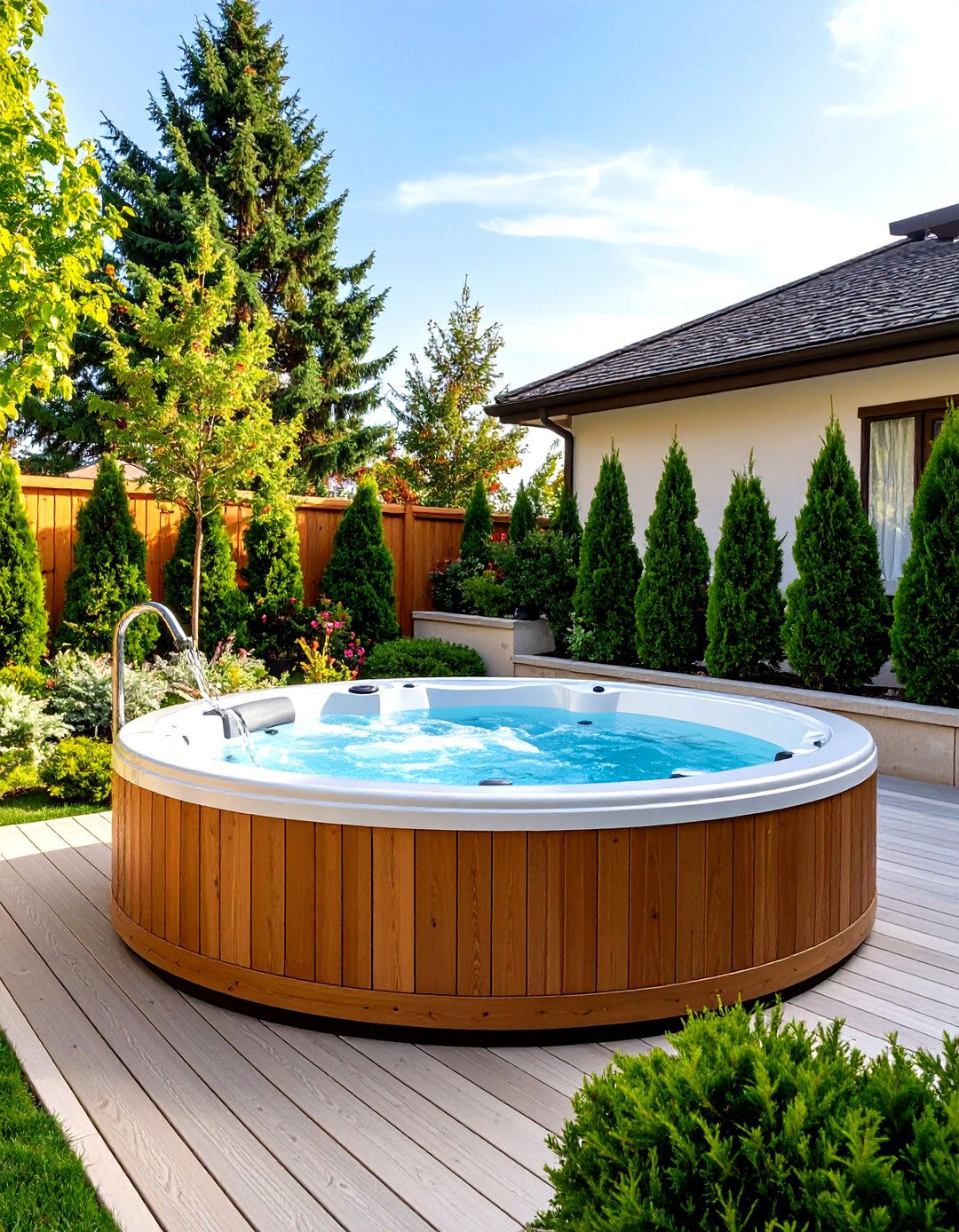
Evergreen plantings provide year-round privacy and visual interest that remains attractive through all seasons without seasonal cleanup requirements. Arborvitae, juniper, and yew represent economical options often used for hedge installations, while dwarf spruce and pine offer standalone appeal. These plants require minimal maintenance once established and provide consistent screening that doesn't fluctuate with seasonal changes. Evergreen shrubs like boxwood create excellent hot tub privacy hedges, with yew offering fast growth rates and shade tolerance. Position evergreens to block prevailing winds while maintaining access to morning or evening sun based on your usage preferences. Consider mixed plantings that combine different evergreen varieties for textural interest and varying heights that create natural-looking borders.
16. Hot Tub Gazebo Garden Integration
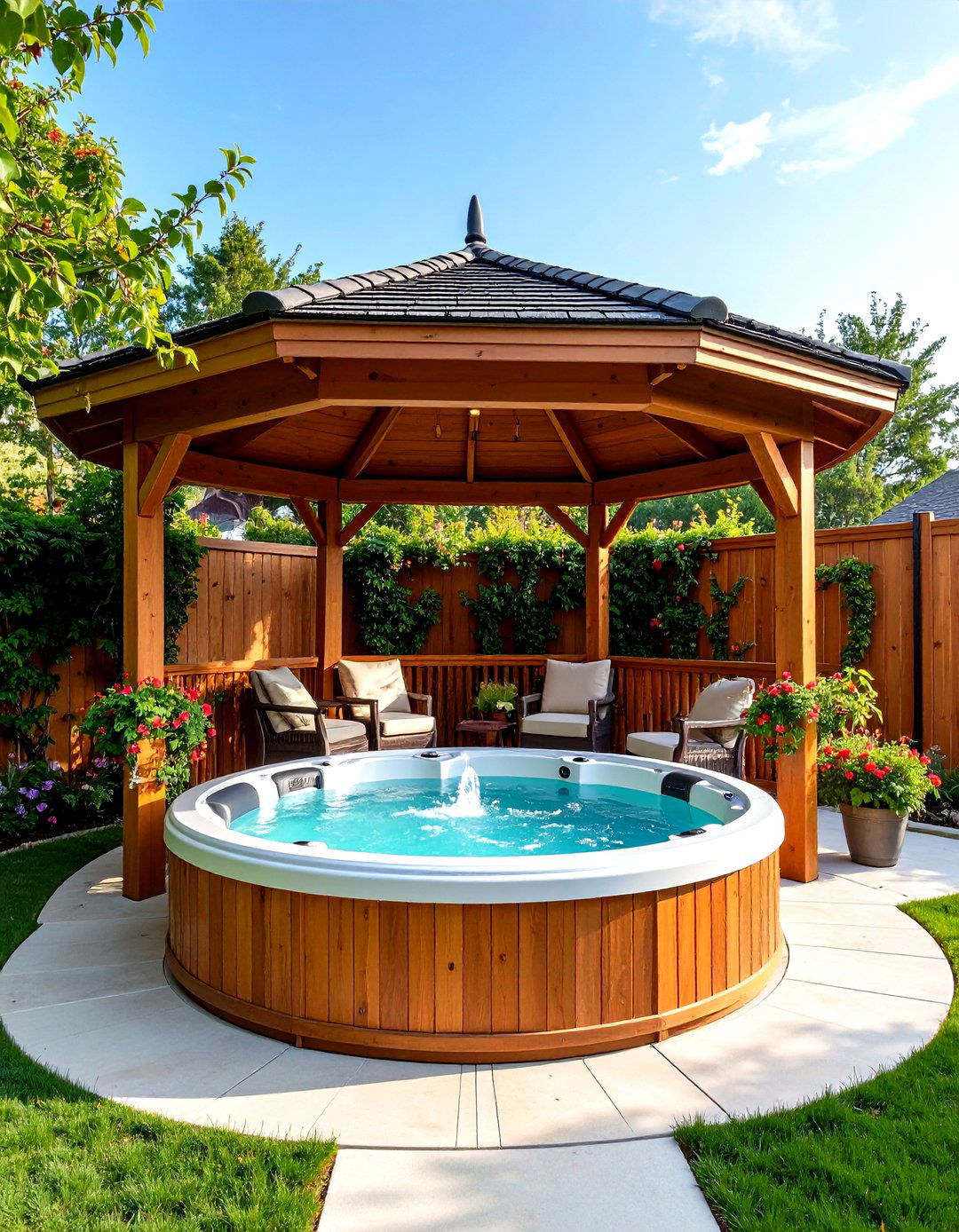
Gazebo structures provide maximum coverage and weather protection while creating resort-like settings that elevate your hot tub experience significantly. Gazebos offer thick roofs and walls on all sides for complete protection, with options for glass walls maintaining outdoor visibility or solid wooden walls for complete privacy. These structures protect both users and equipment from rain, snow, and harsh sun exposure that can damage spa components over time. Lattice-style gazebo walls with stylish cut-out windows allow light penetration while maintaining private atmospheres for relaxation. Include electrical installations for lighting, music systems, and convenient outlets for spa maintenance equipment. Consider screened gazebo options that provide insect protection during warm weather months when bugs might otherwise interfere with relaxation.
17. Hot Tub Pathway Lighting Design
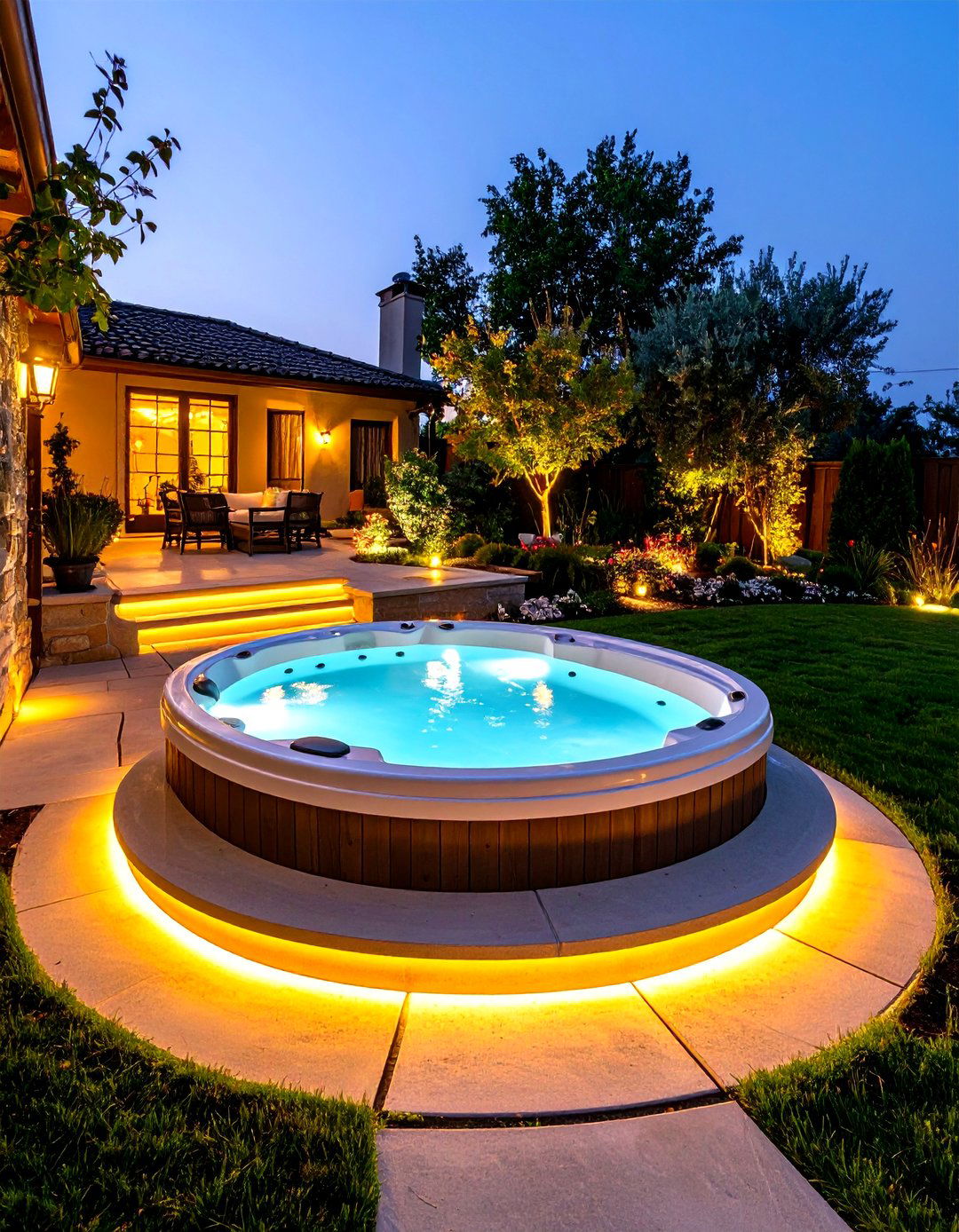
Thoughtfully designed pathway lighting ensures safe navigation to your hot tub while creating inviting approaches that enhance the overall landscape aesthetic. Walkway lighting improves safety during nighttime hot tub access while casting soft glows throughout your yard using energy-efficient options. Installing lighting along paths leading to hot tubs and inlaying illumination into navigation steps creates stylish features that draw attention after sunset. Solar-powered pathway lights provide energy-efficient illumination that automatically activates during evening hours without requiring electrical installations. Choose fixtures that complement your overall design theme while providing adequate illumination for safe footing on various surfaces. Consider motion-activated options that conserve energy while providing immediate lighting when approaching your spa area during dark conditions.
18. Hot Tub Natural Stone Landscaping
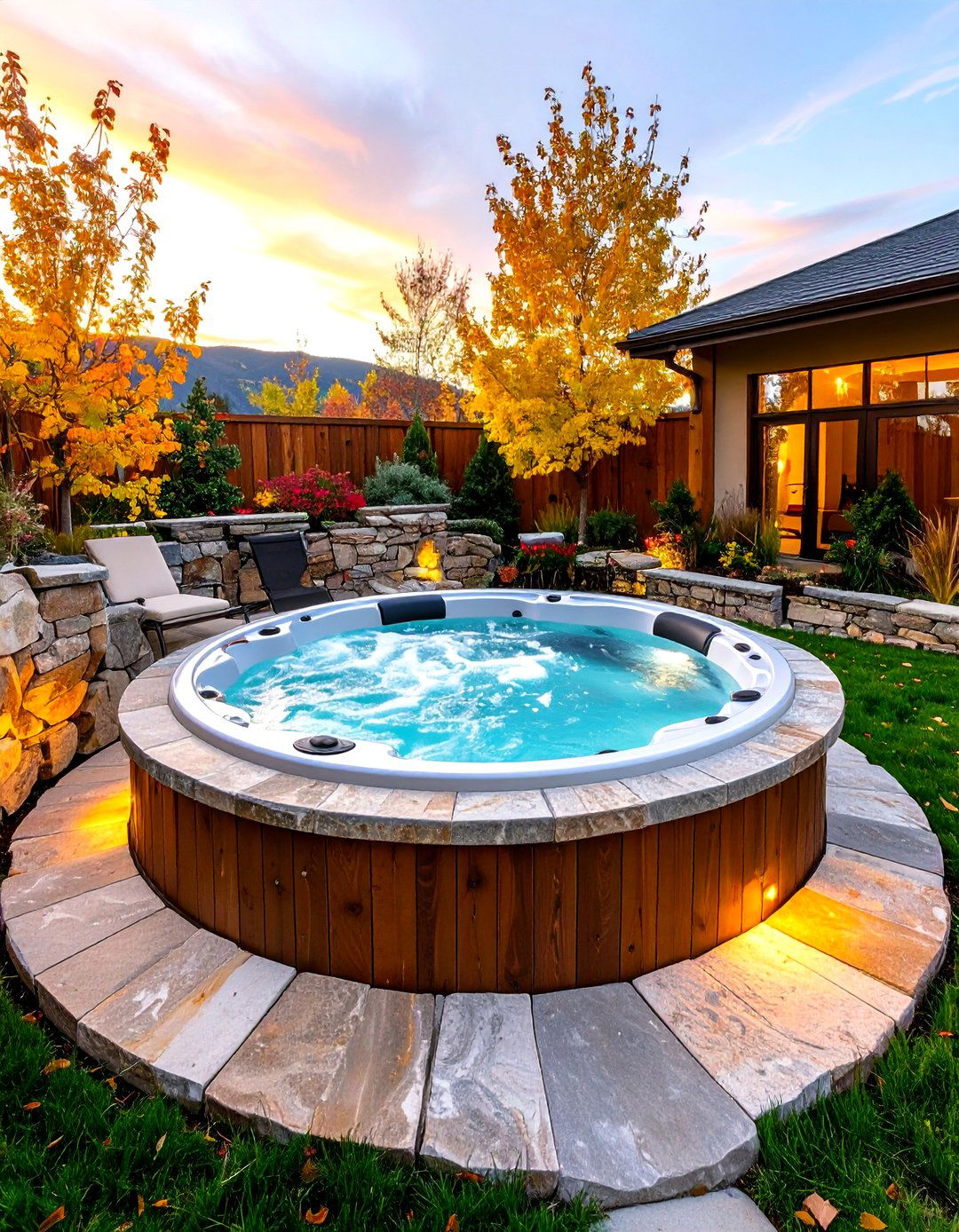
Natural stone materials create timeless elegance that increases property values while requiring minimal long-term maintenance compared to other hardscaping options. Stone decks provide distinctive appearances that can achieve both cozy rustic aesthetics and ultra-modern designs depending on stone selection and installation patterns. Incorporating travertine and black stone veneer panels creates elegant hot tub appearances, especially when spas are positioned halfway into ground level with surrounding stone walls. Different stone varieties offer unique colors, textures, and durability characteristics that should be matched to your climate conditions and aesthetic preferences. Consider heated stone surfaces for comfortable bare-foot access during cooler weather. Integrate stone materials throughout your landscape design to create cohesive appearances that tie your hot tub area into broader outdoor living spaces.
19. Hot Tub Waterfall Feature Design
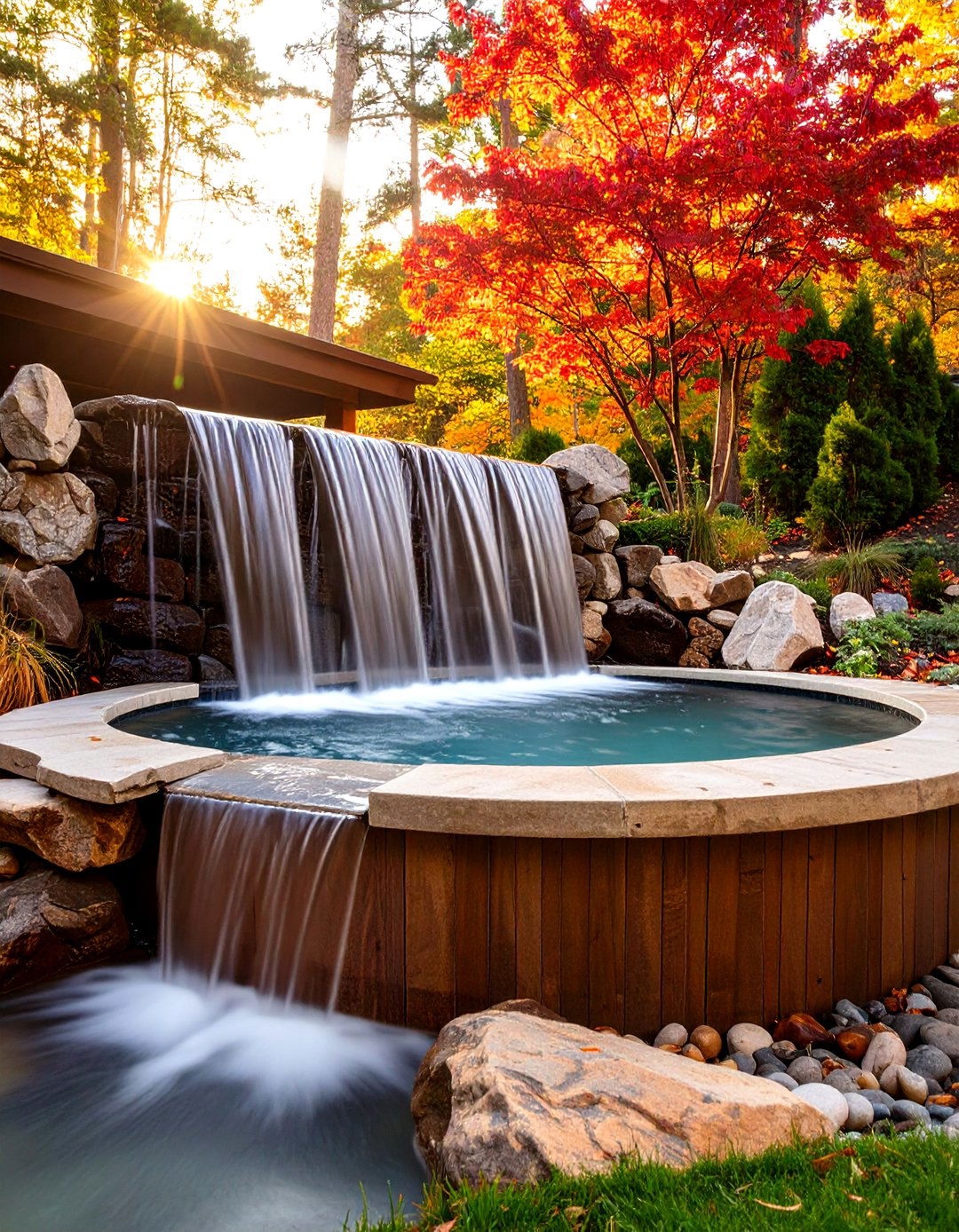
Incorporating waterfalls into your hot tub landscaping creates stunning focal points that provide both visual drama and soothing acoustic environments. Waterfall features enhance relaxation and create soothing ambiance through the steady sound of cascading water. These installations can be integrated directly into stone walls behind your hot tub or positioned nearby as independent landscape features that complement your spa experience. Adding waterfall features to rustic hot tub designs not only looks appealing but also provides pleasant sound backgrounds perfect for relaxation. Modern waterfall systems often include LED lighting that illuminates the flowing water for dramatic nighttime effects. Consider recirculating systems that conserve water while maintaining continuous flow patterns. Position waterfalls to mask unwanted noise from nearby roads or neighbors while creating natural soundscapes that enhance meditation and stress relief.
20. Hot Tub Multi-Level Landscaping
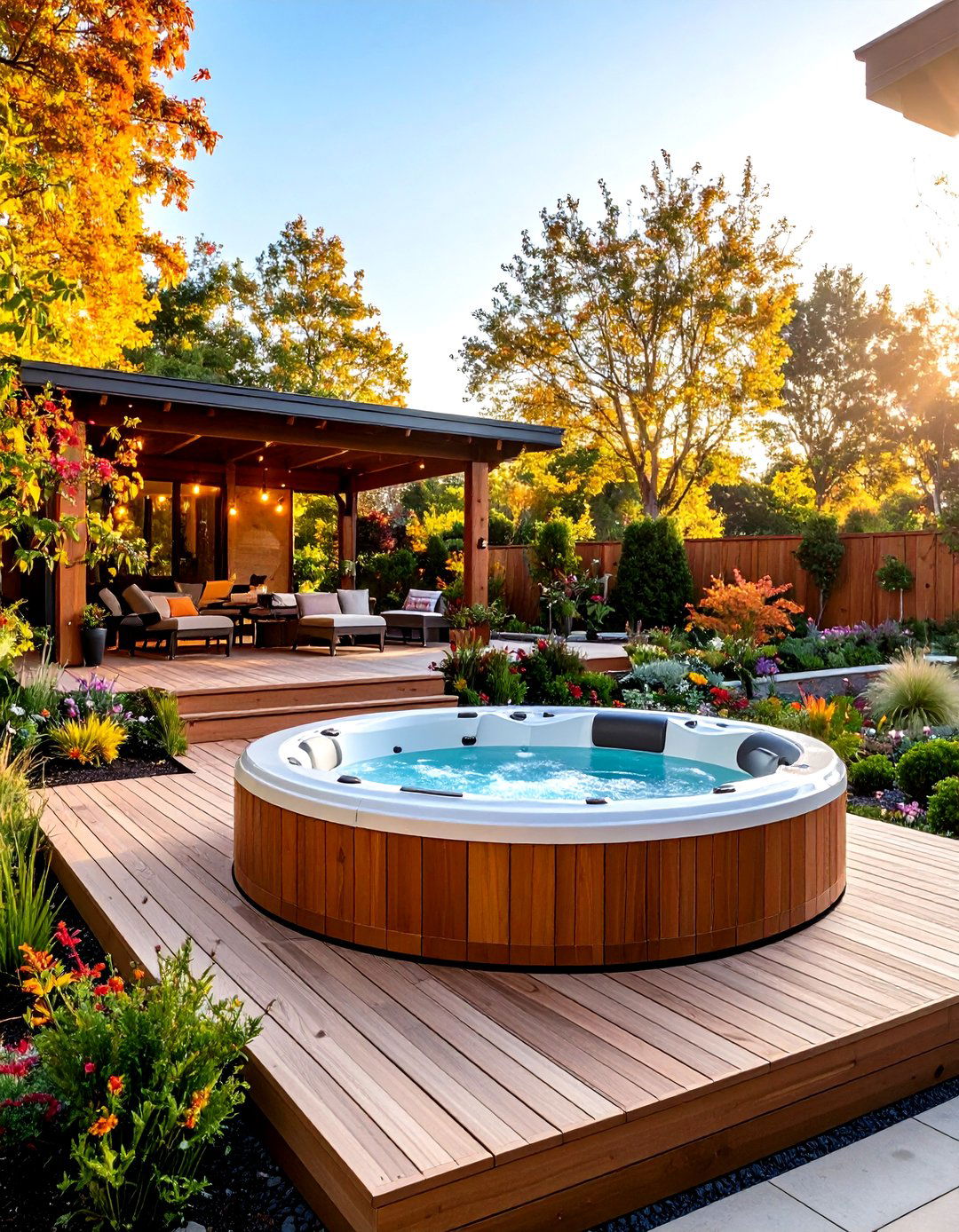
Creating multiple elevation levels around your hot tub adds visual interest and functional zones that accommodate various outdoor activities and entertaining needs. Tiered decking designs provide space around hot tubs as well as elevated areas accessible through added steps for entertaining and relaxation. Multi-level deck installations can use upper levels as weather cover for lower hot tub areas, providing protection from rain and overhead sun exposure. Different levels can accommodate distinct functions such as dining areas, lounging spaces, and equipment storage while maintaining cohesive design themes throughout your landscape. Multi-level designs allow integration of various materials like wood, stone, and composite decking for textural interest. Consider incorporating planters at different elevations to create layered garden effects that add privacy and natural beauty to your multi-dimensional outdoor living space.
Conclusion:
Successful hot tub landscaping combines practical functionality with aesthetic appeal to create outdoor sanctuaries that enhance daily life and property values. Whether working with modest budgets or extensive renovation plans, strategic plant placement and architectural elements can transform spa areas into private retreats. From natural privacy hedges to sophisticated lighting systems, each landscaping approach offers unique benefits that cater to different lifestyles and design preferences. The key lies in selecting ideas that complement your existing landscape while addressing specific needs such as privacy, weather protection, and maintenance requirements. By implementing these thoughtful landscaping strategies, you'll create an inviting outdoor escape that provides relaxation and enjoyment for years to come.



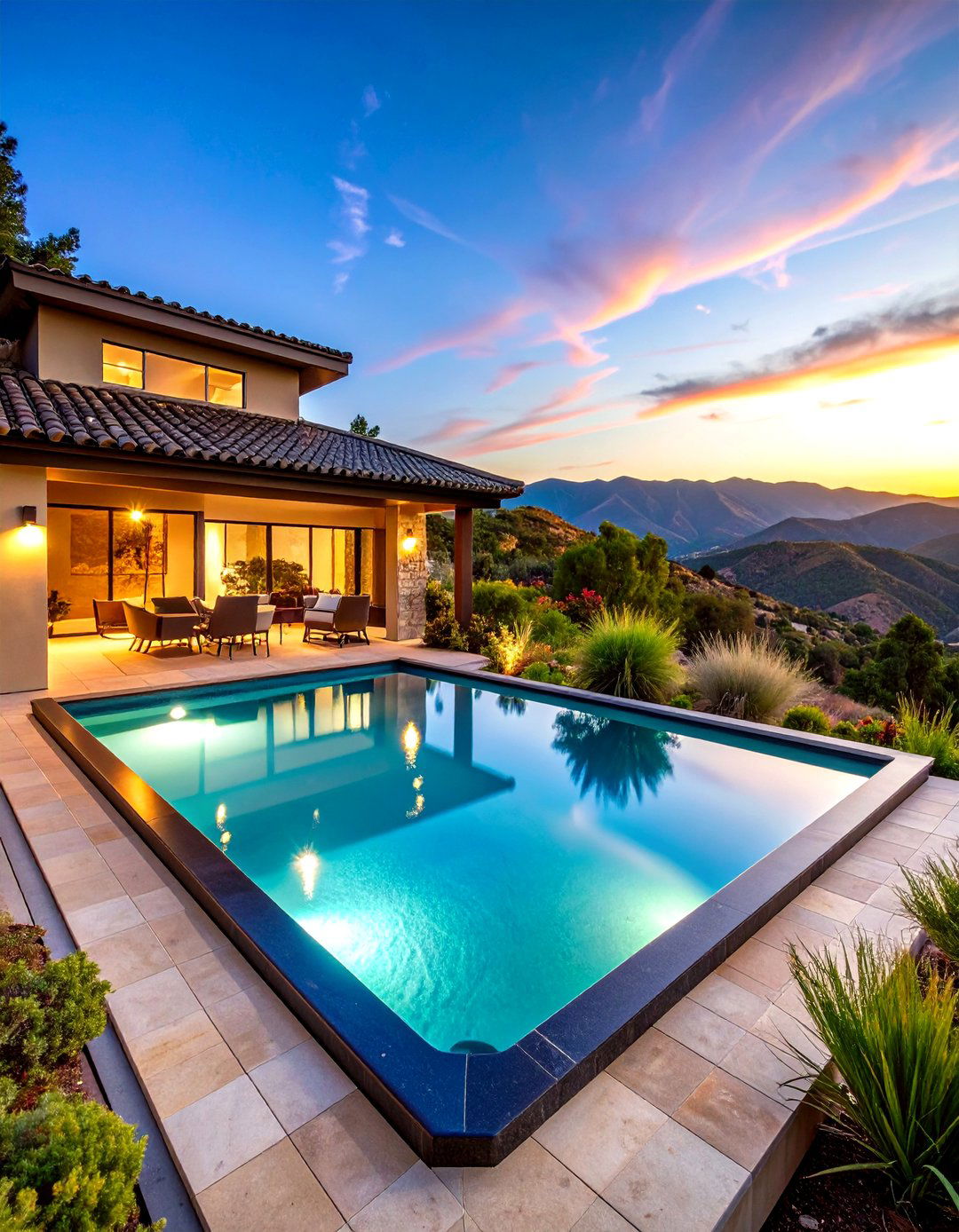
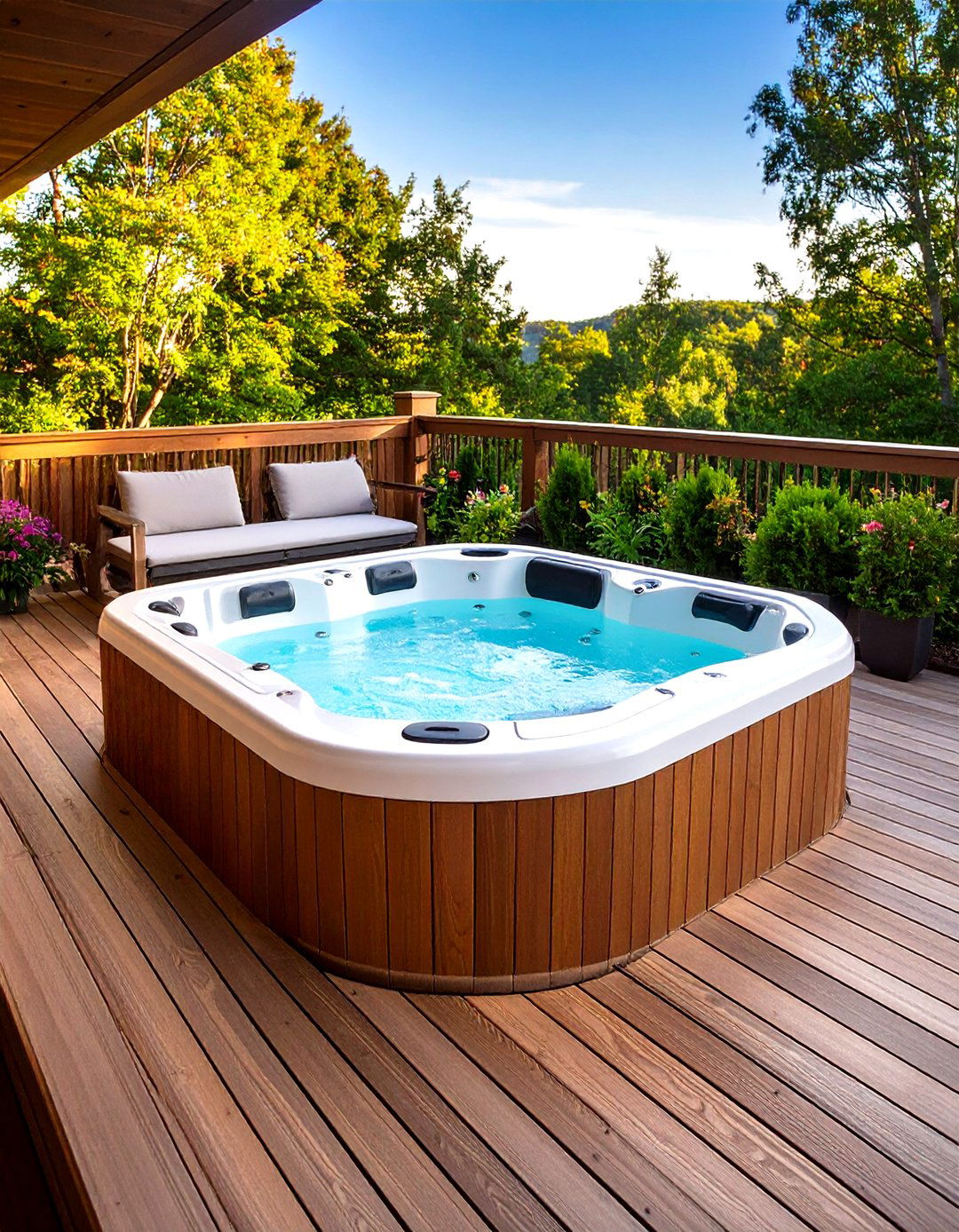
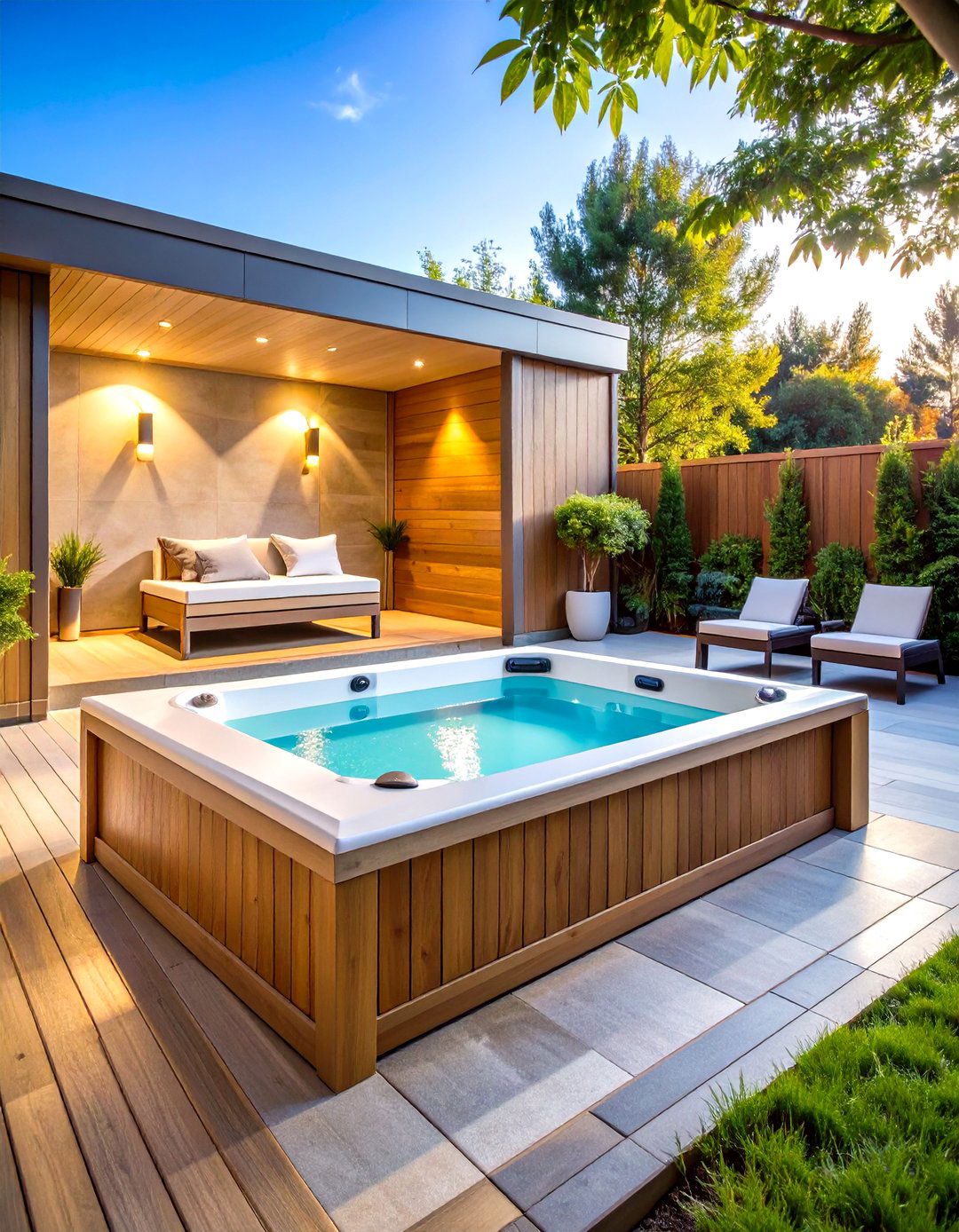
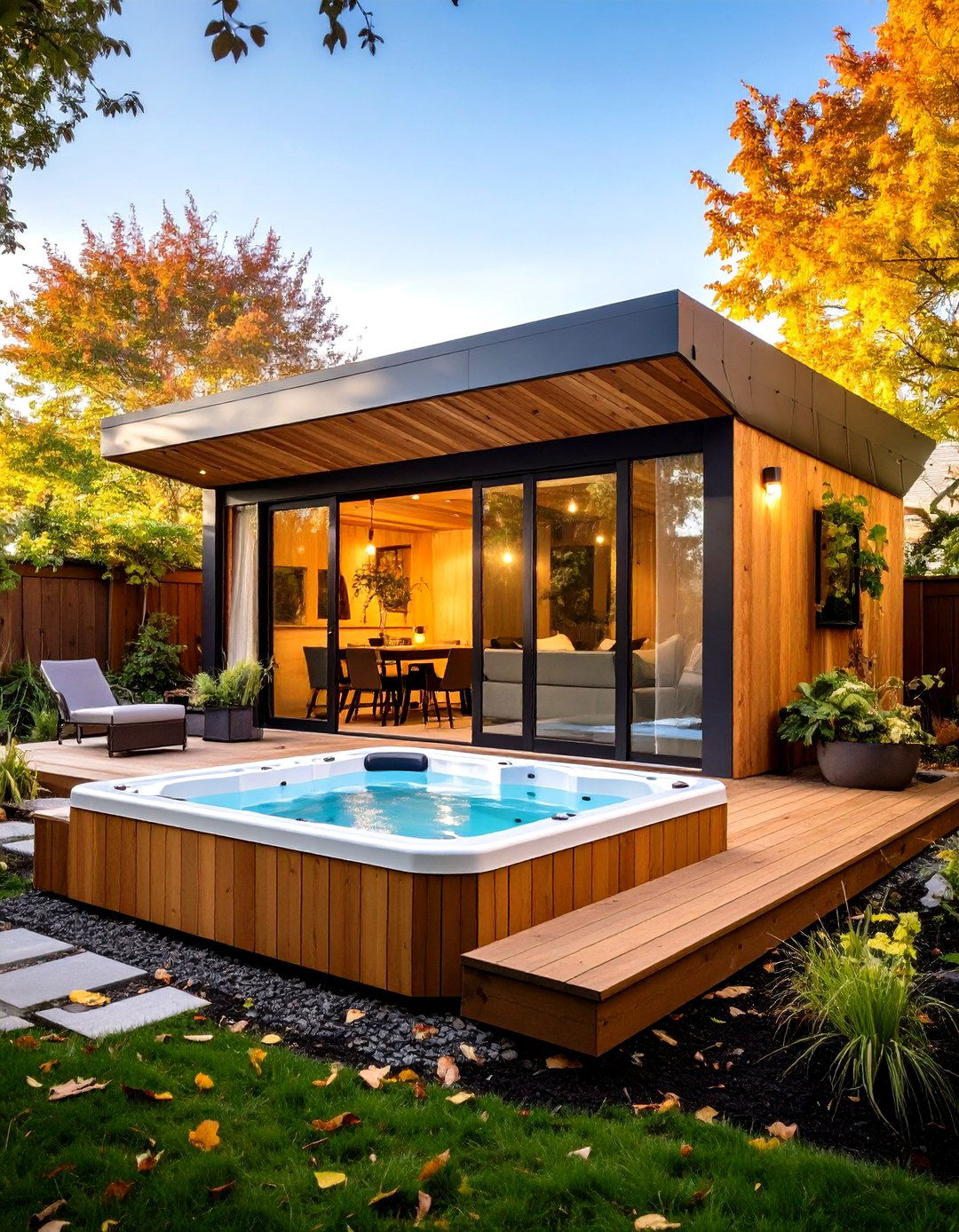
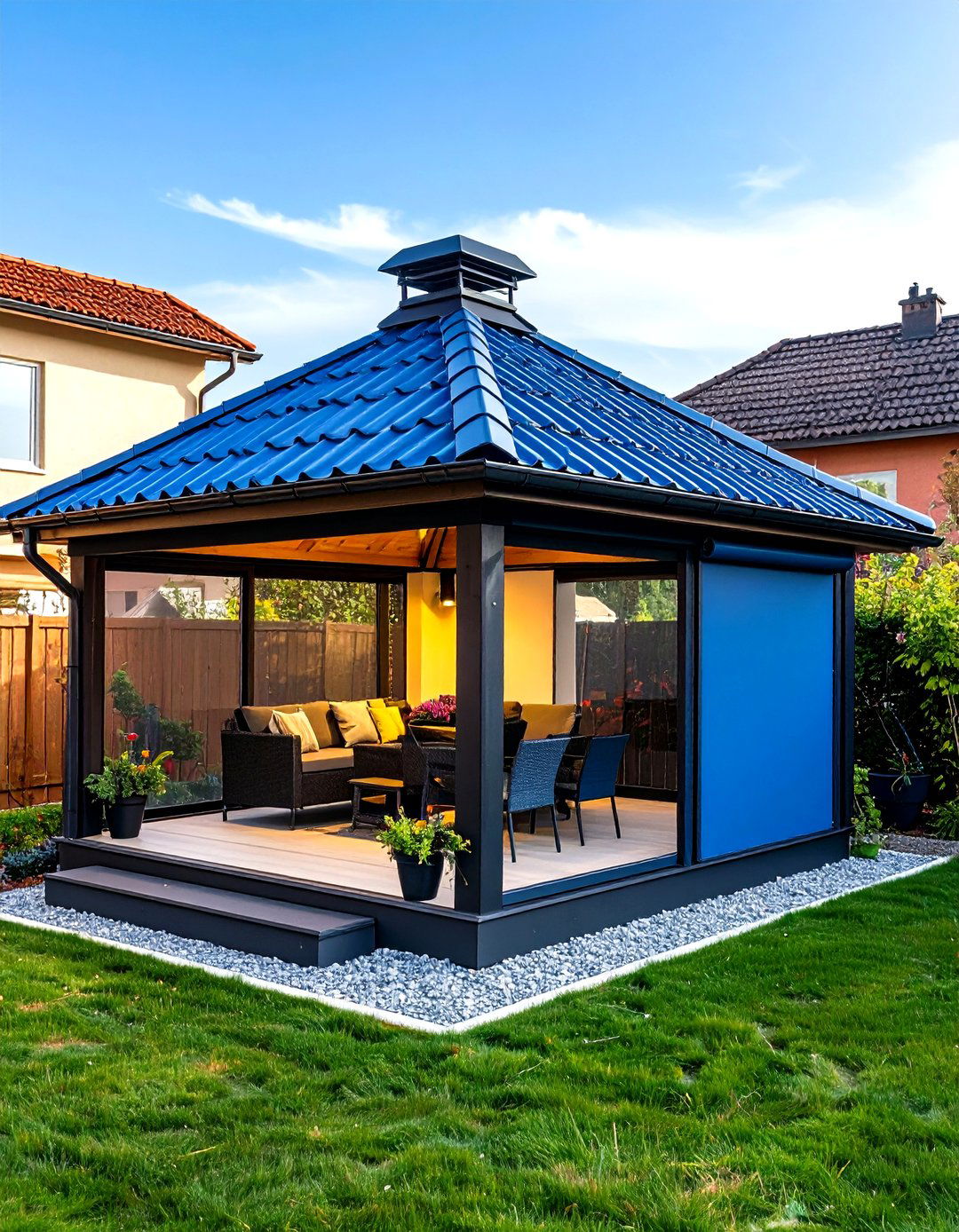

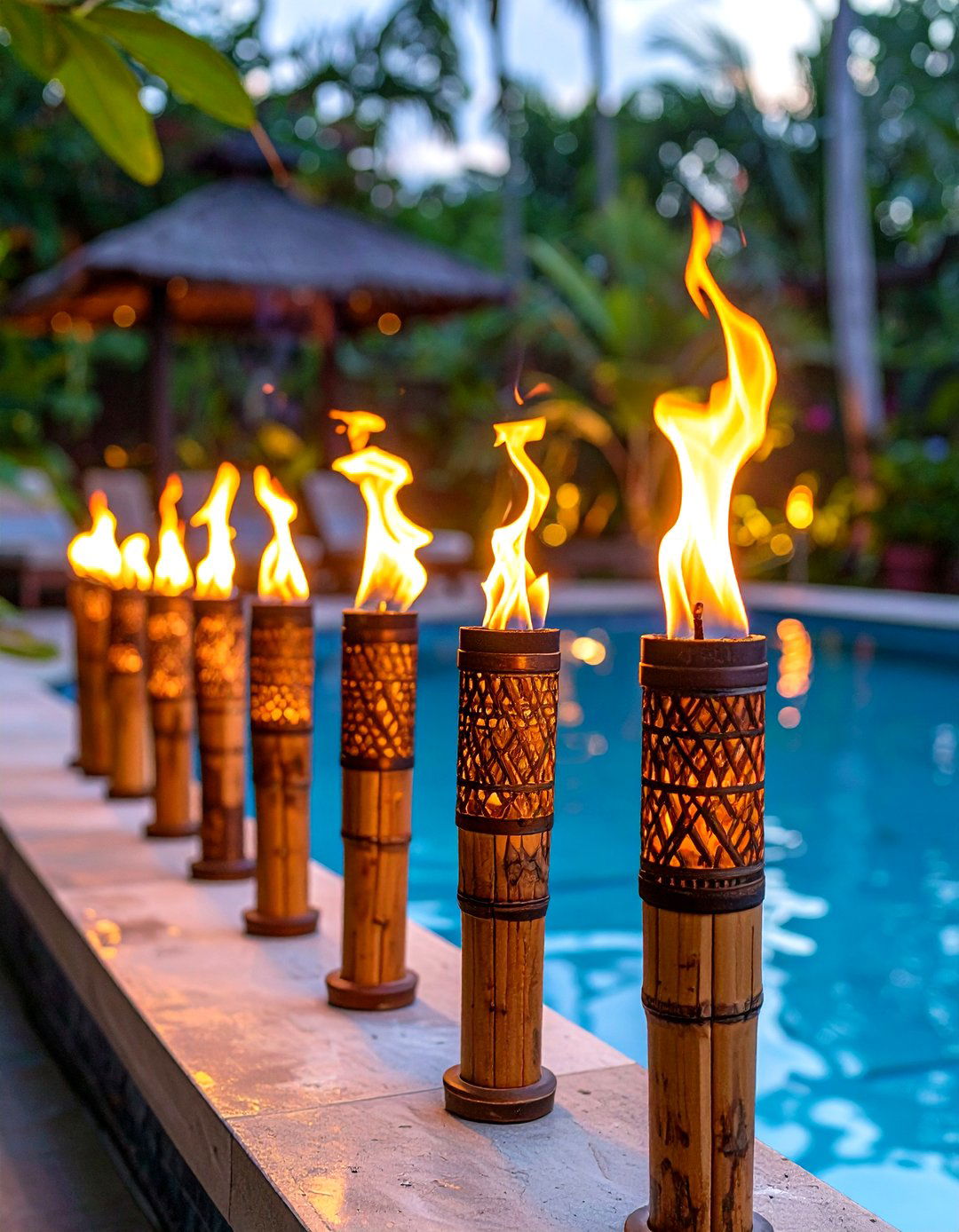
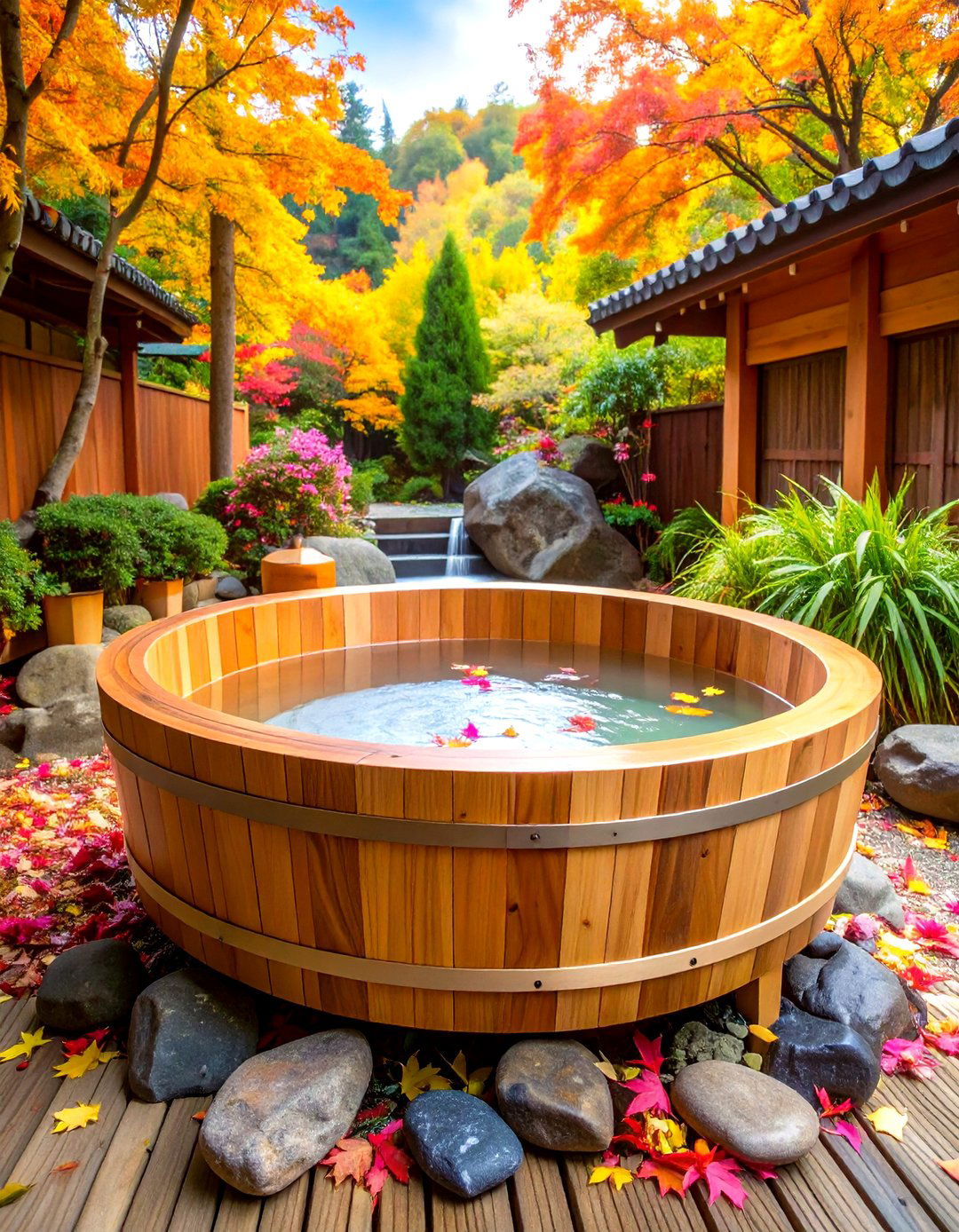
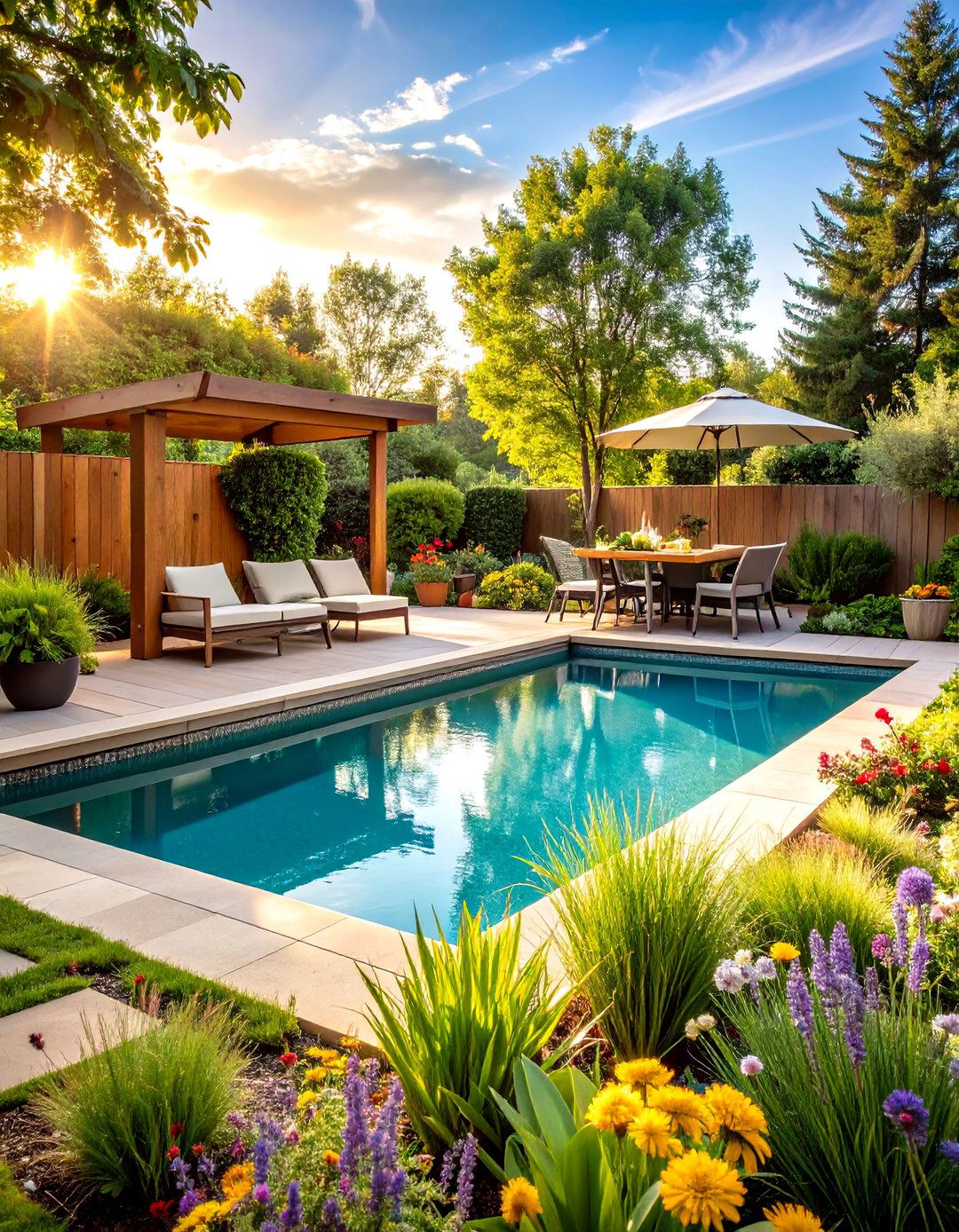
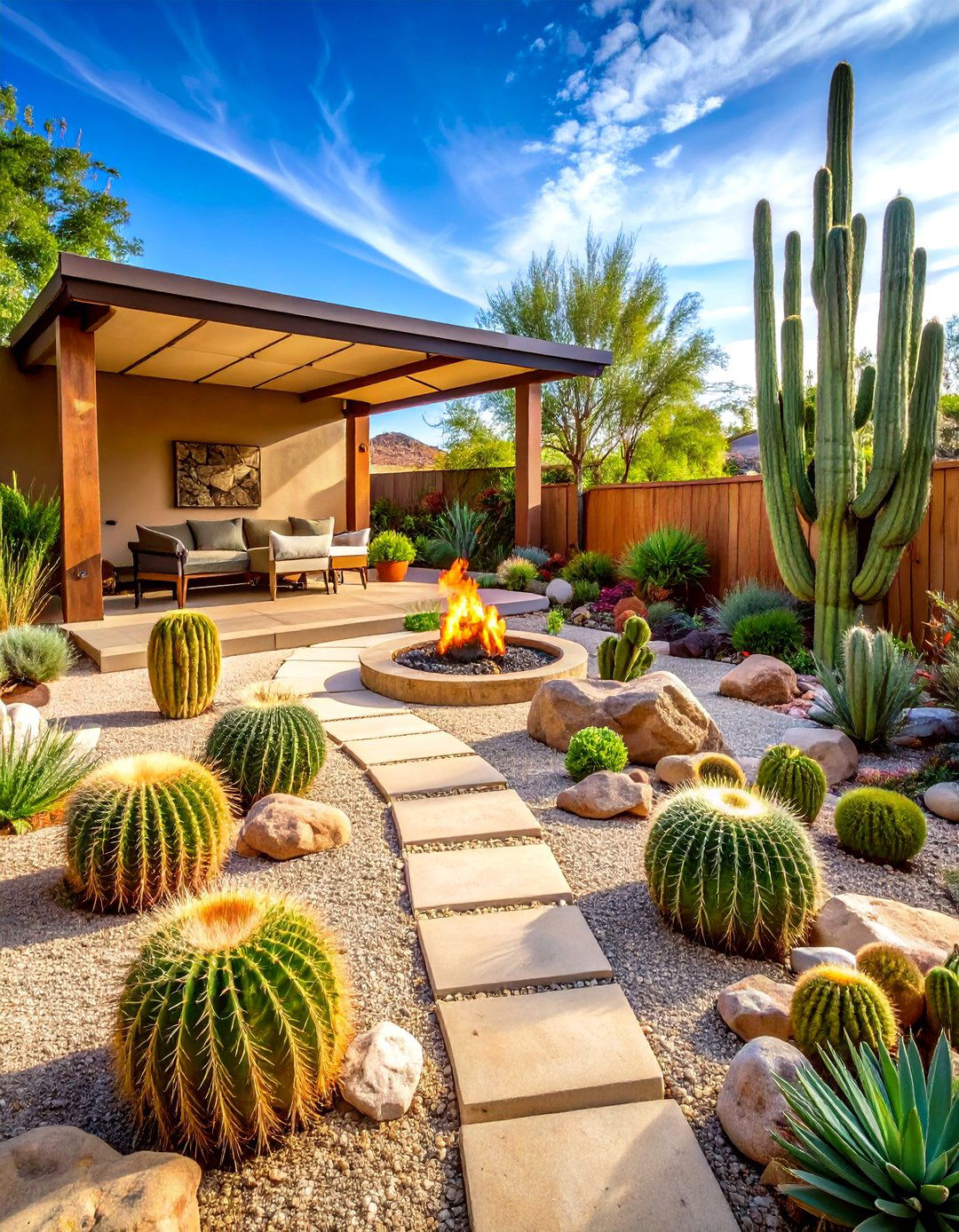
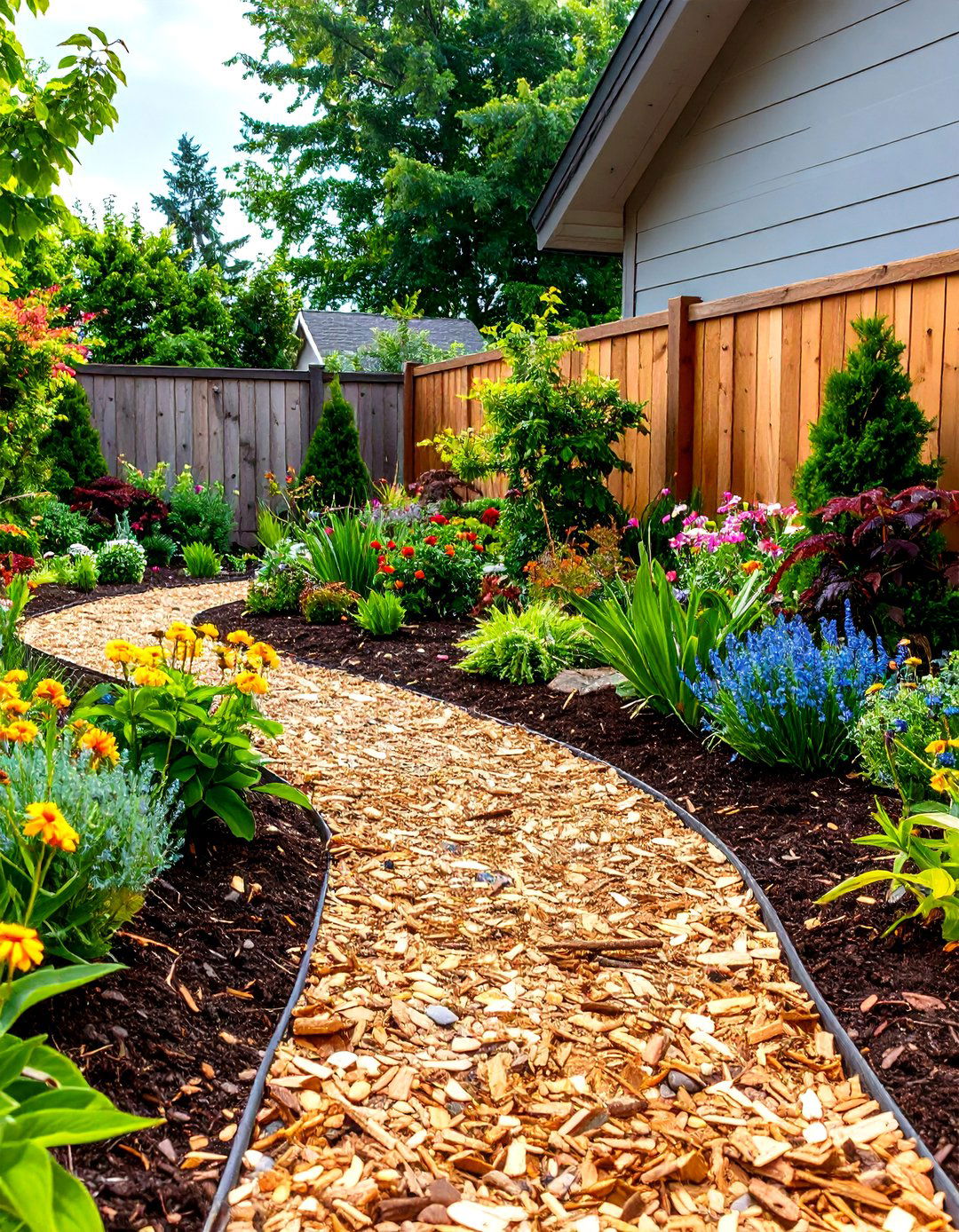
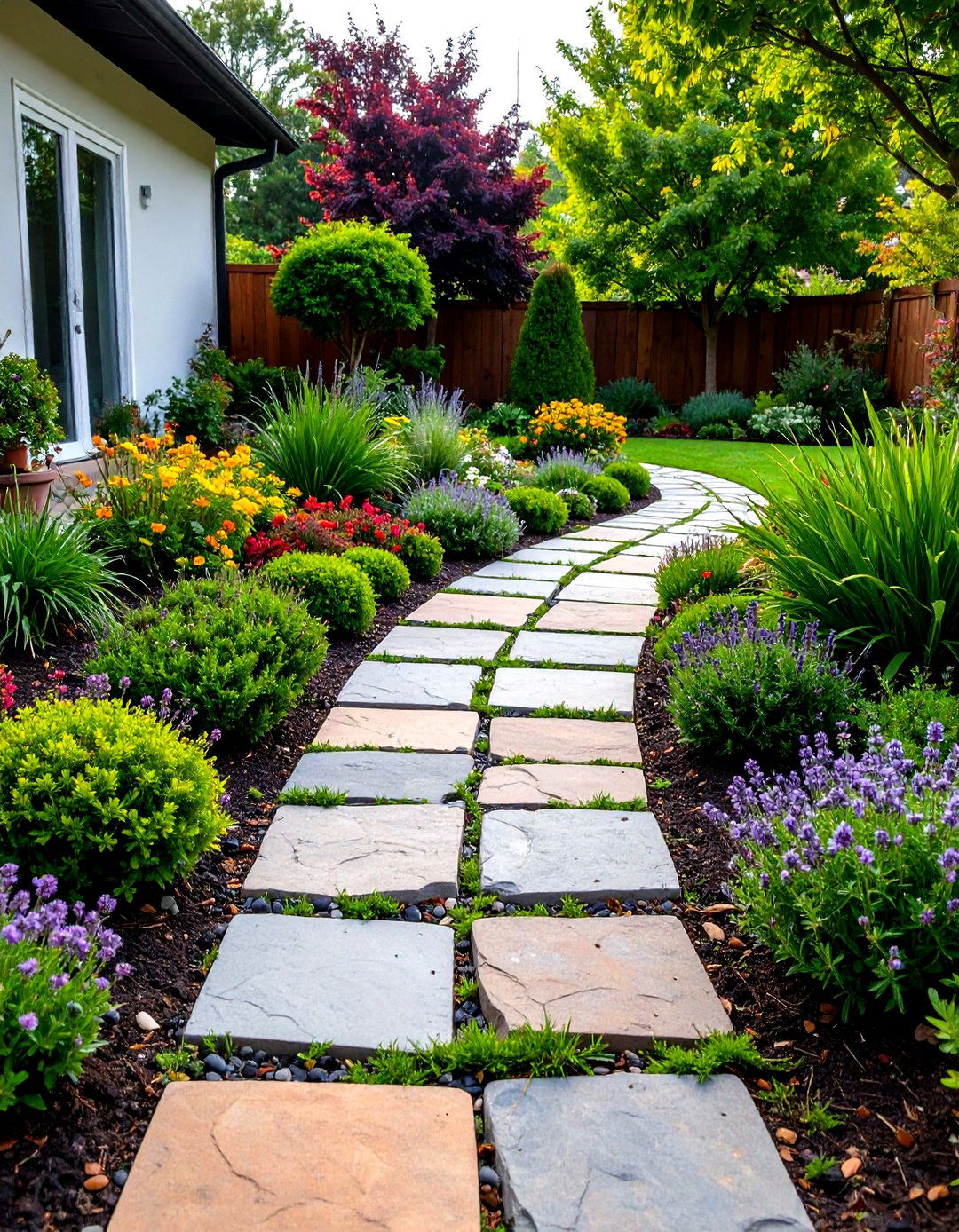
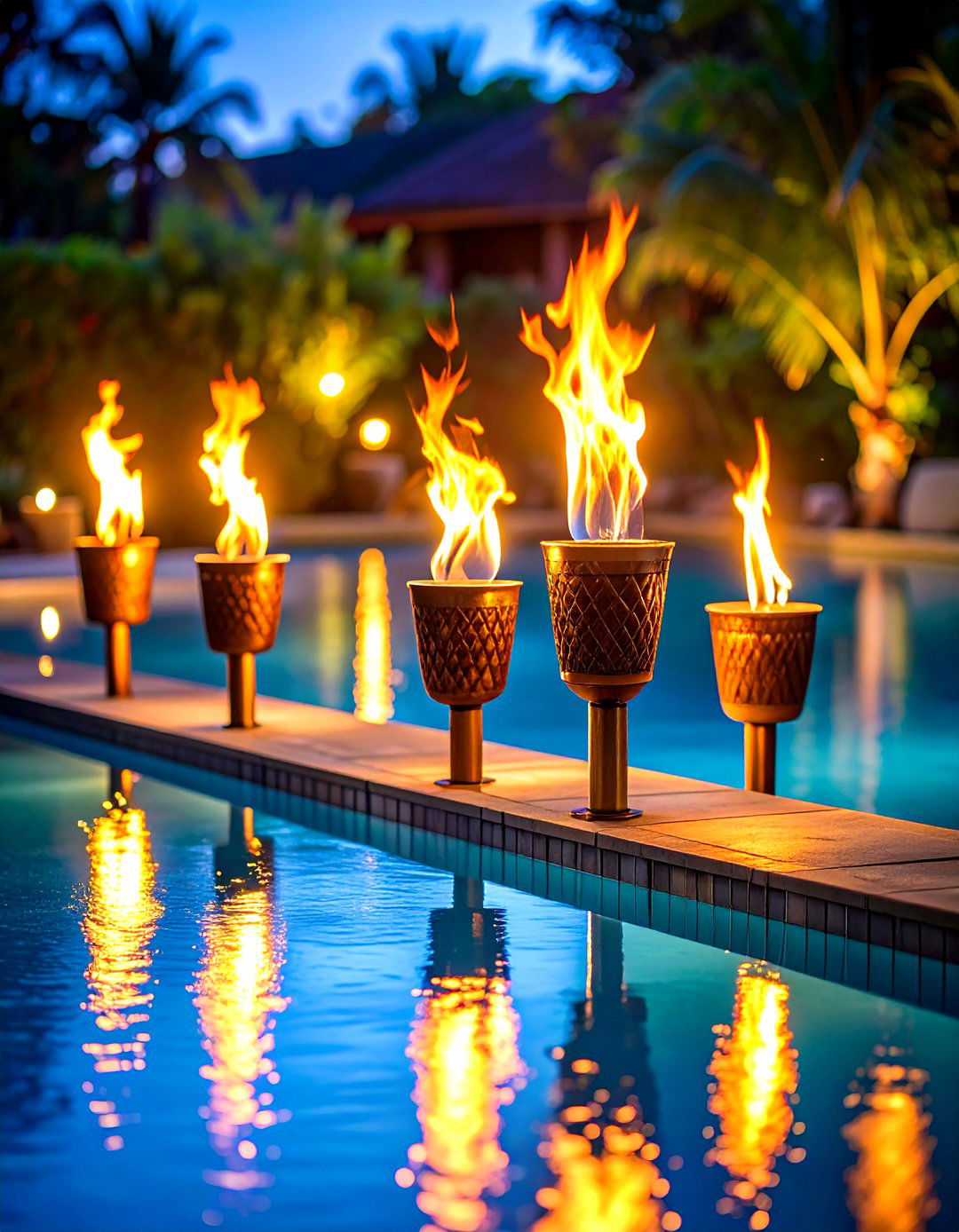
Leave a Reply